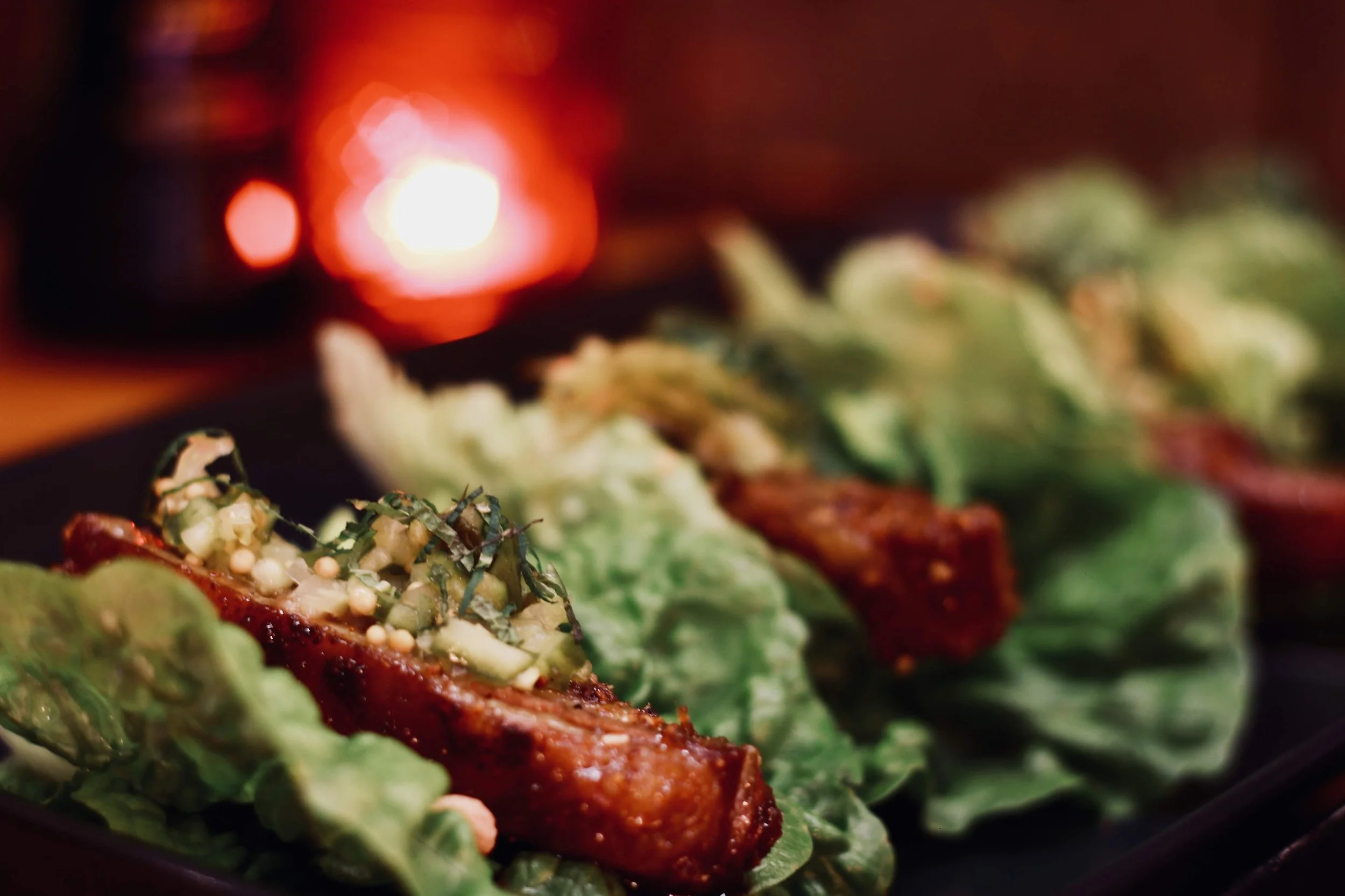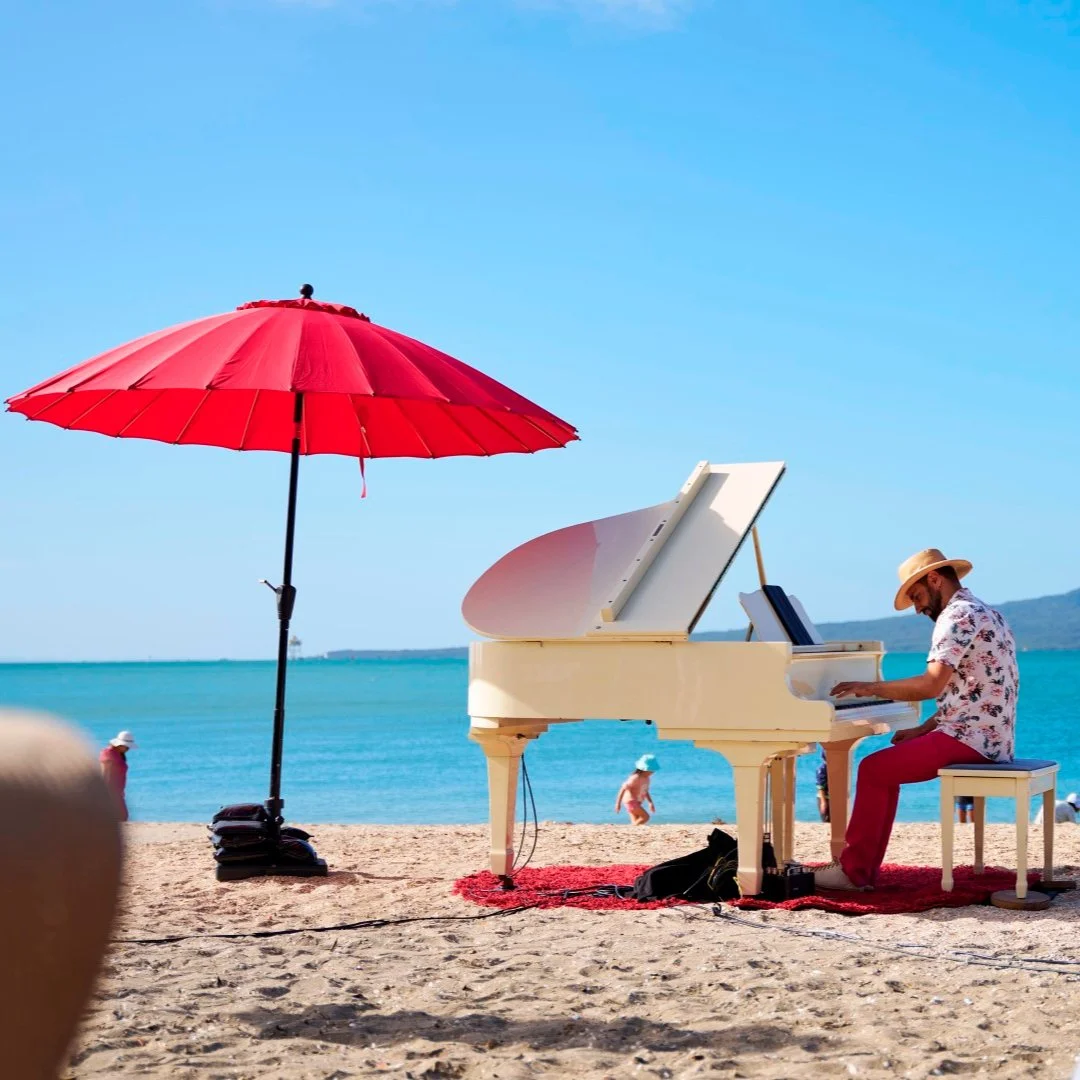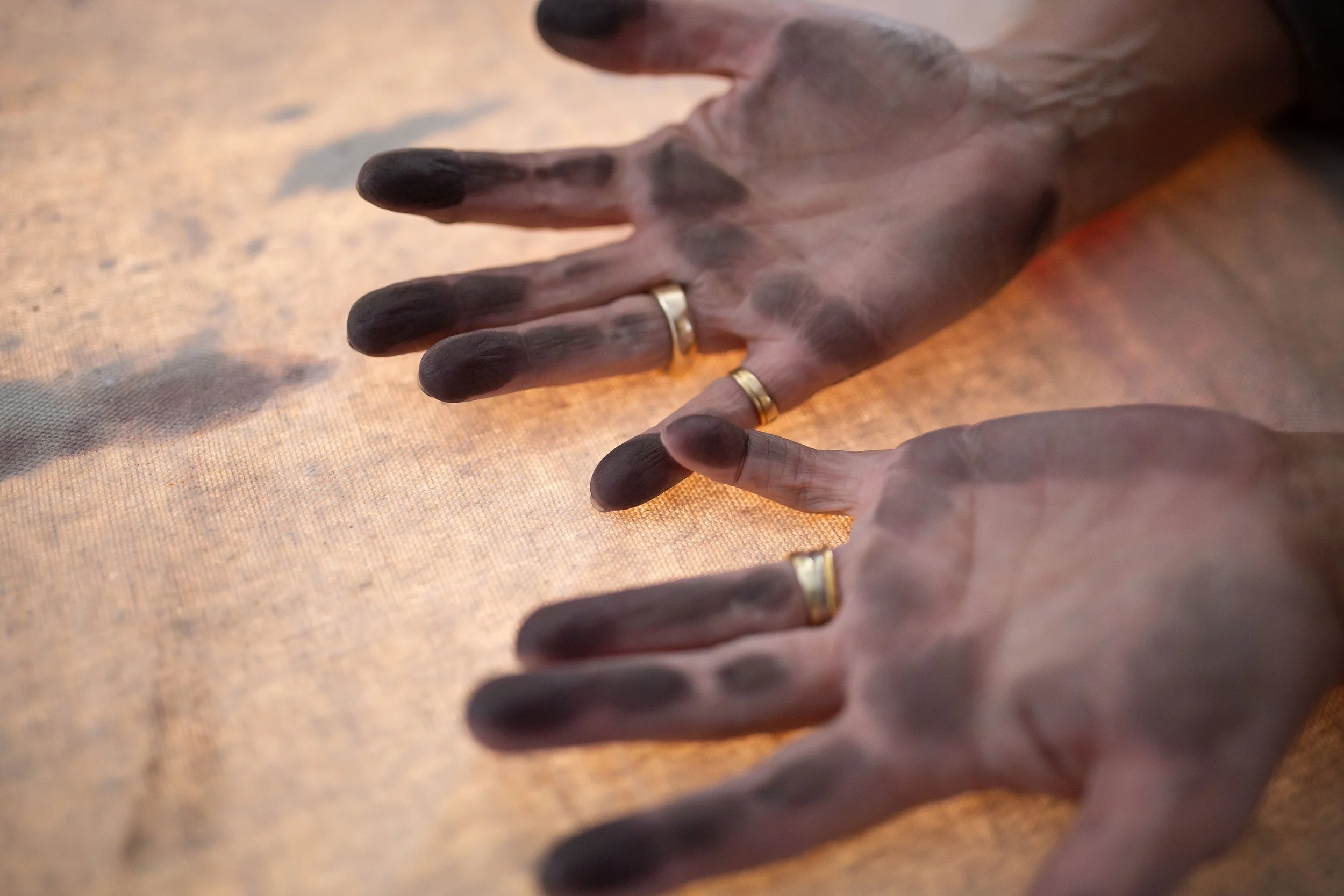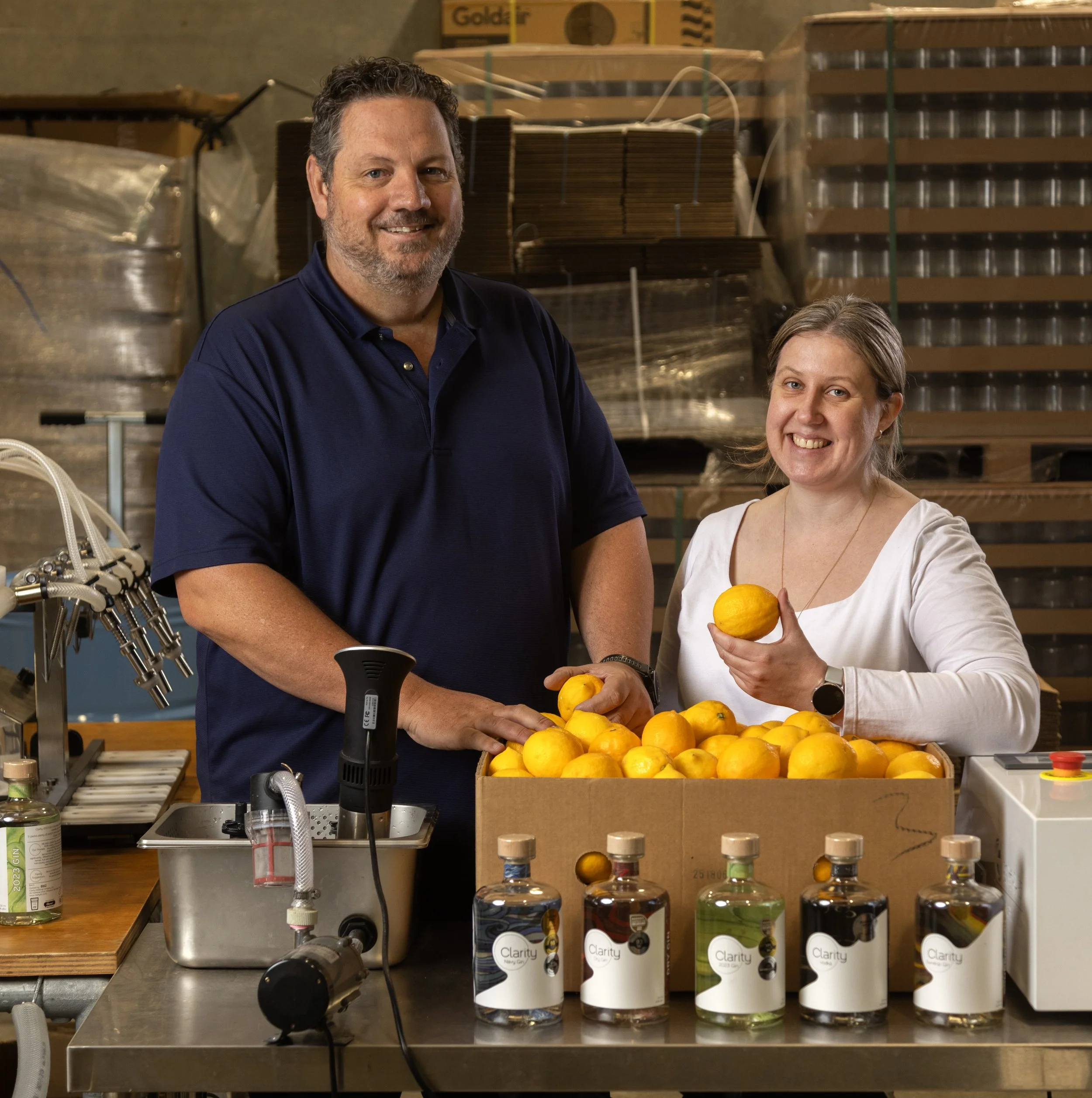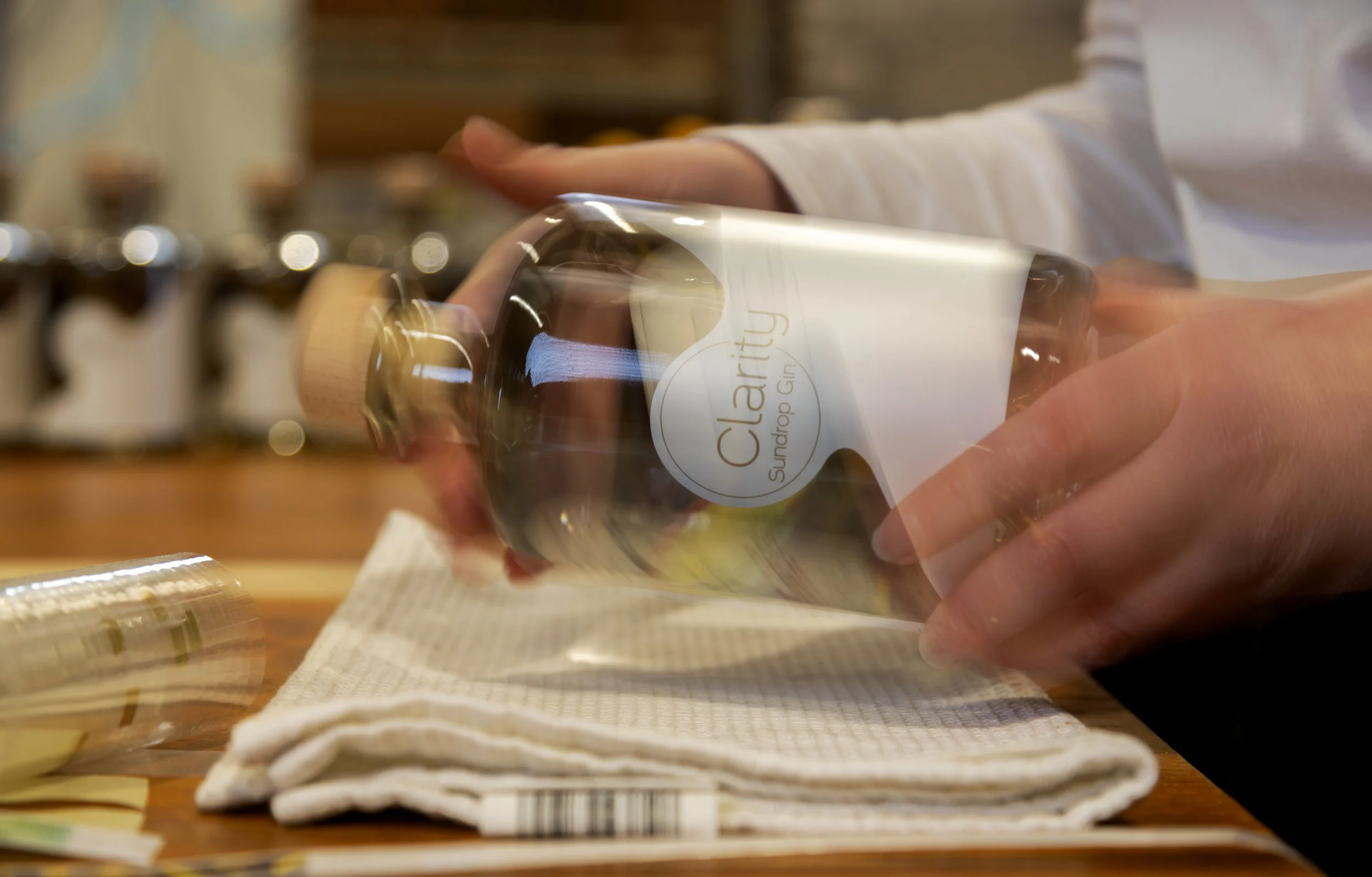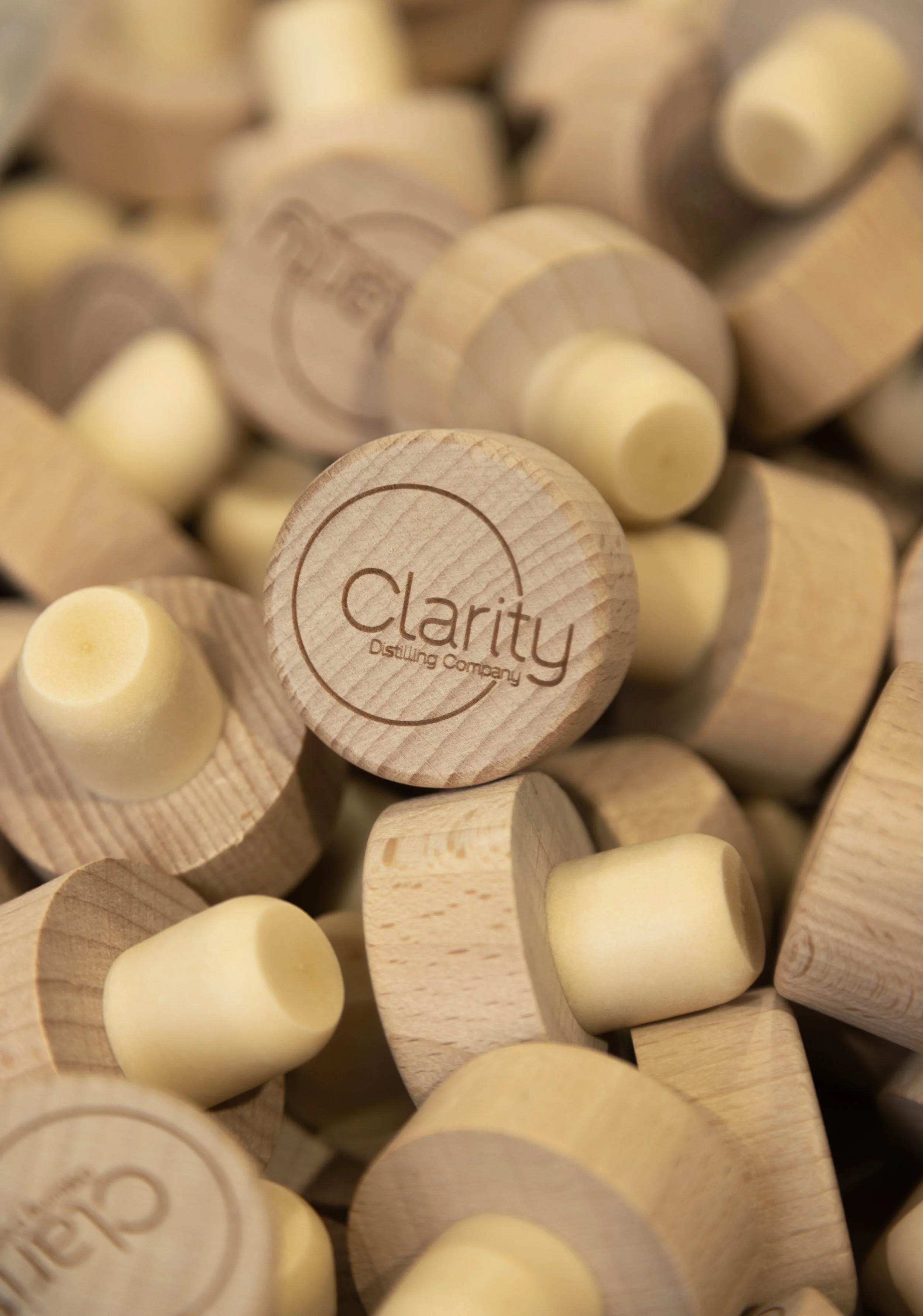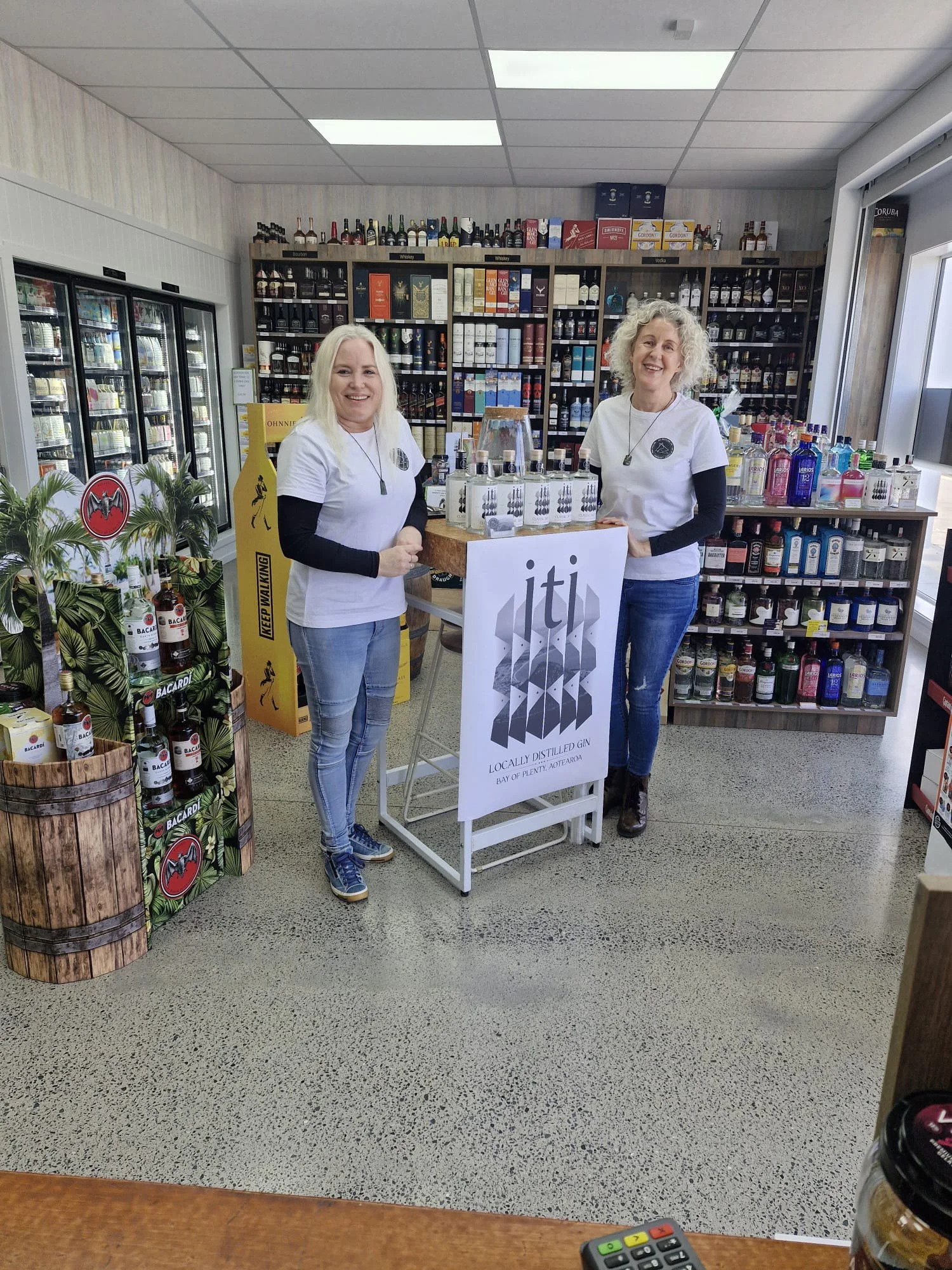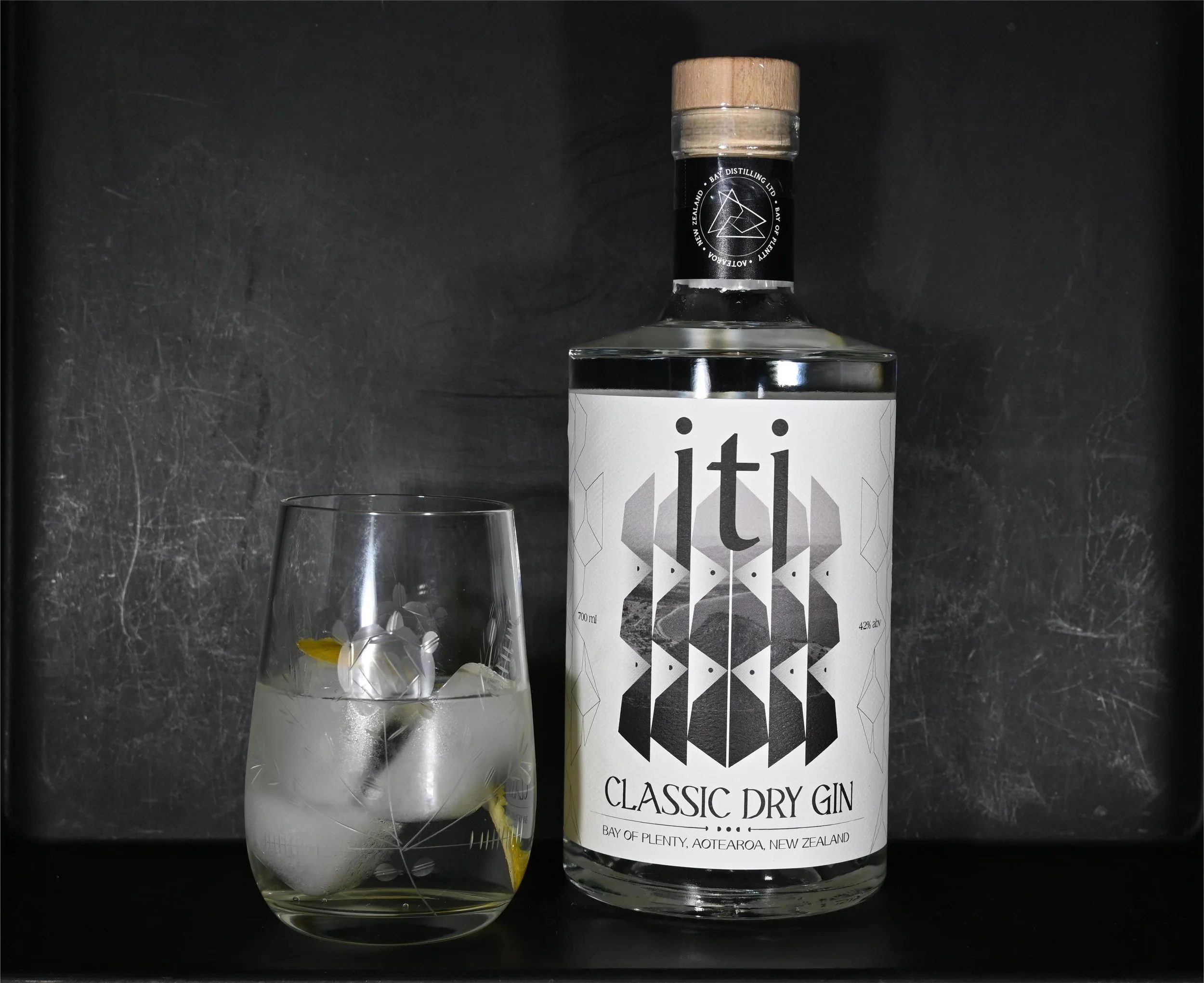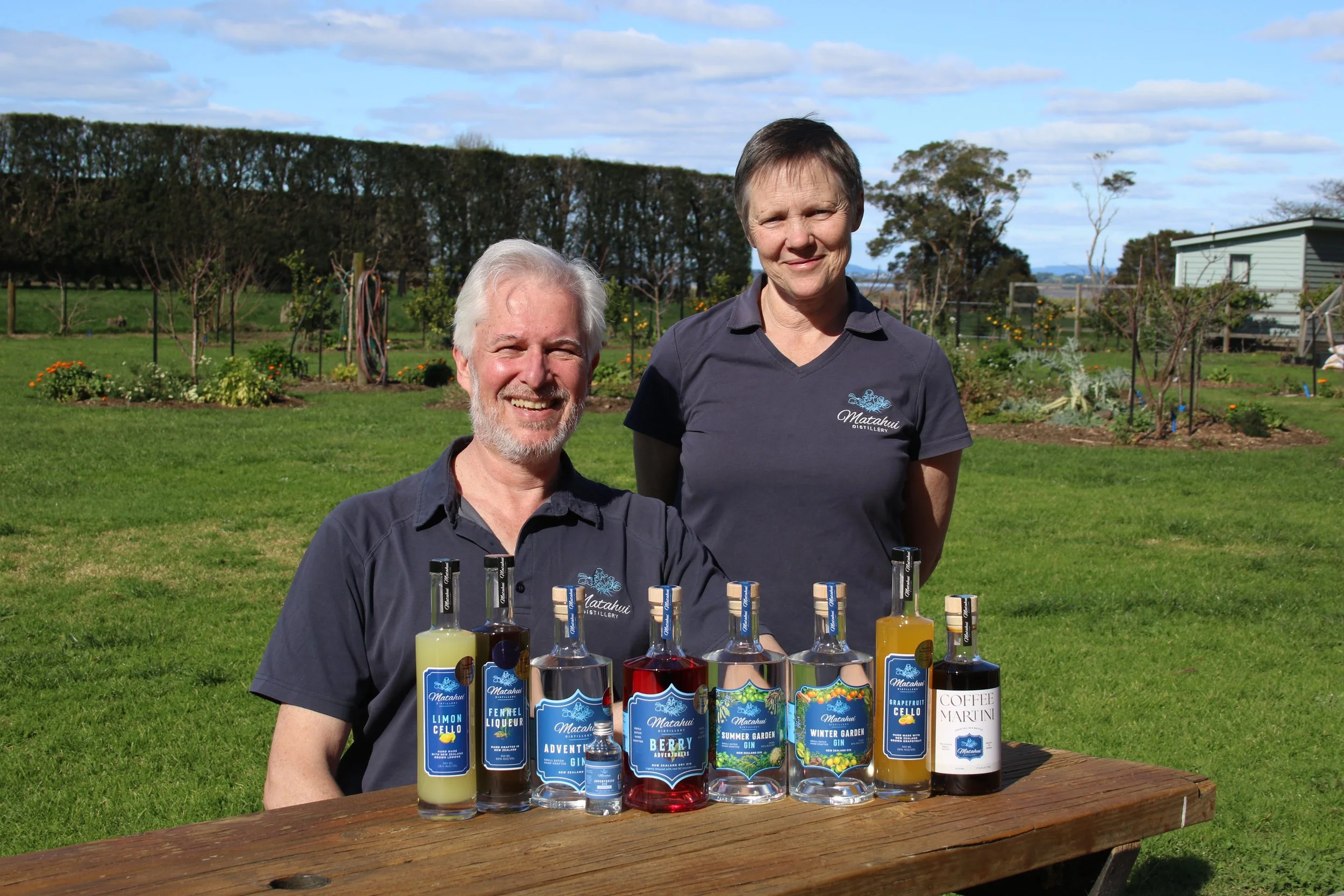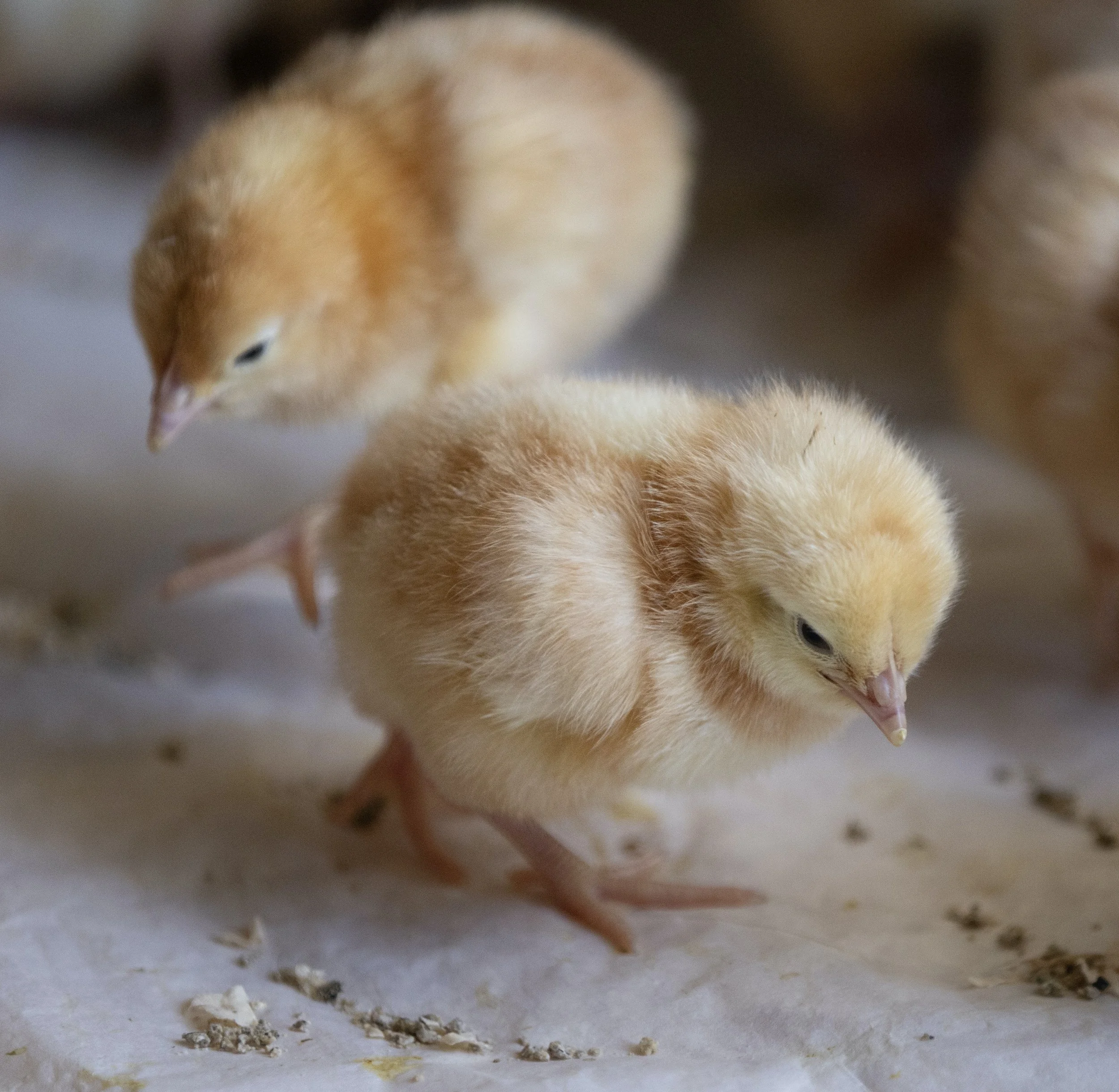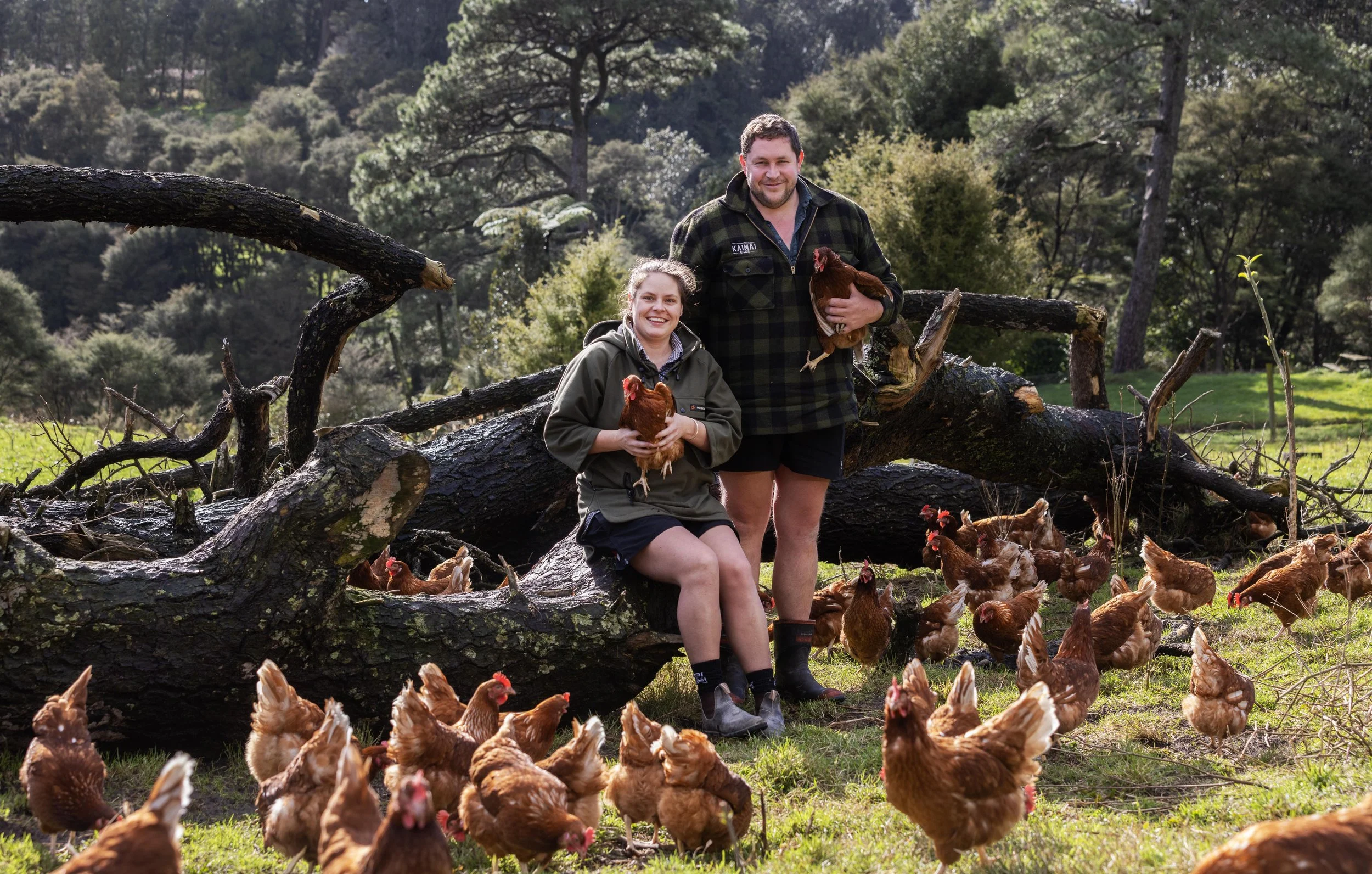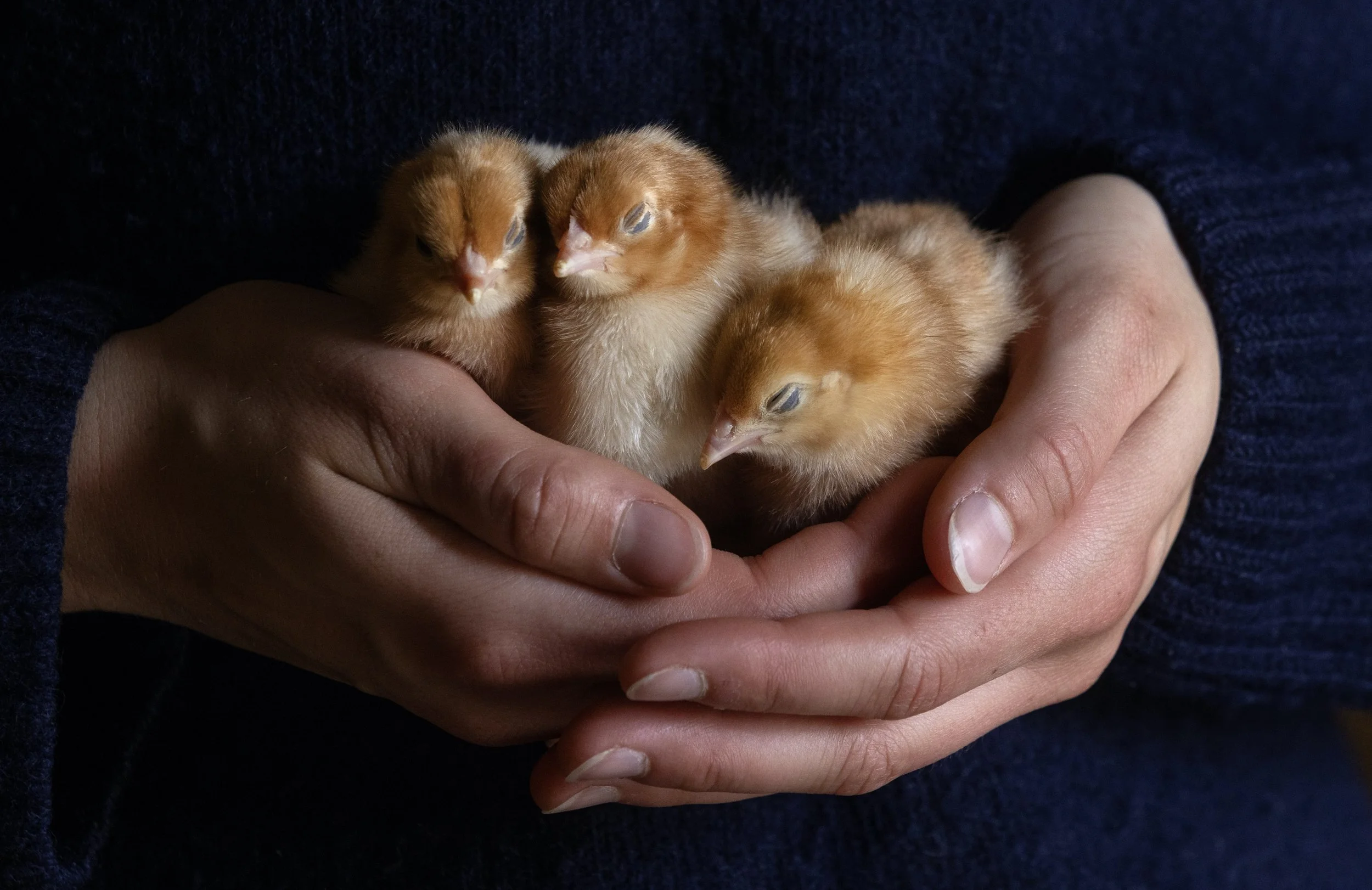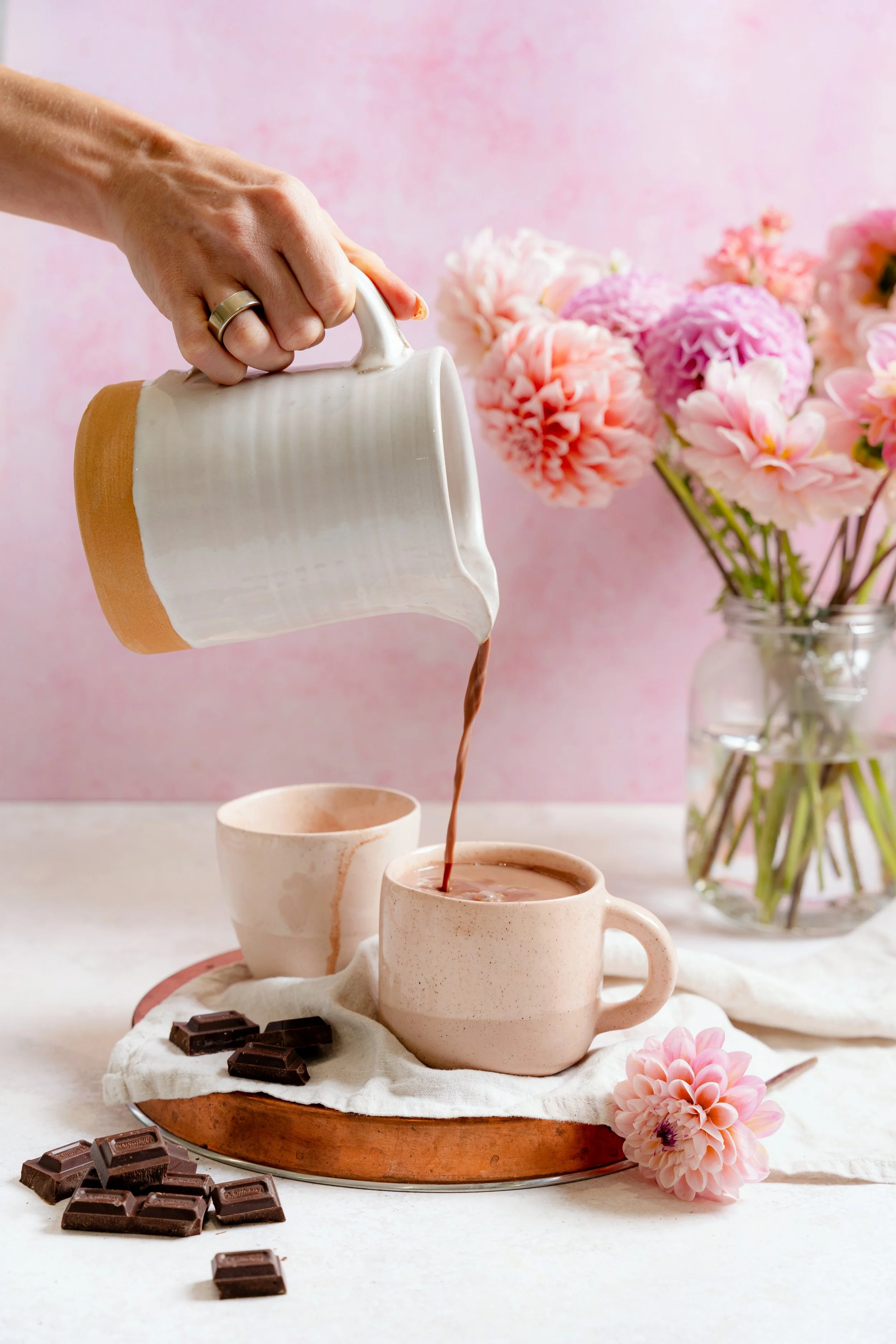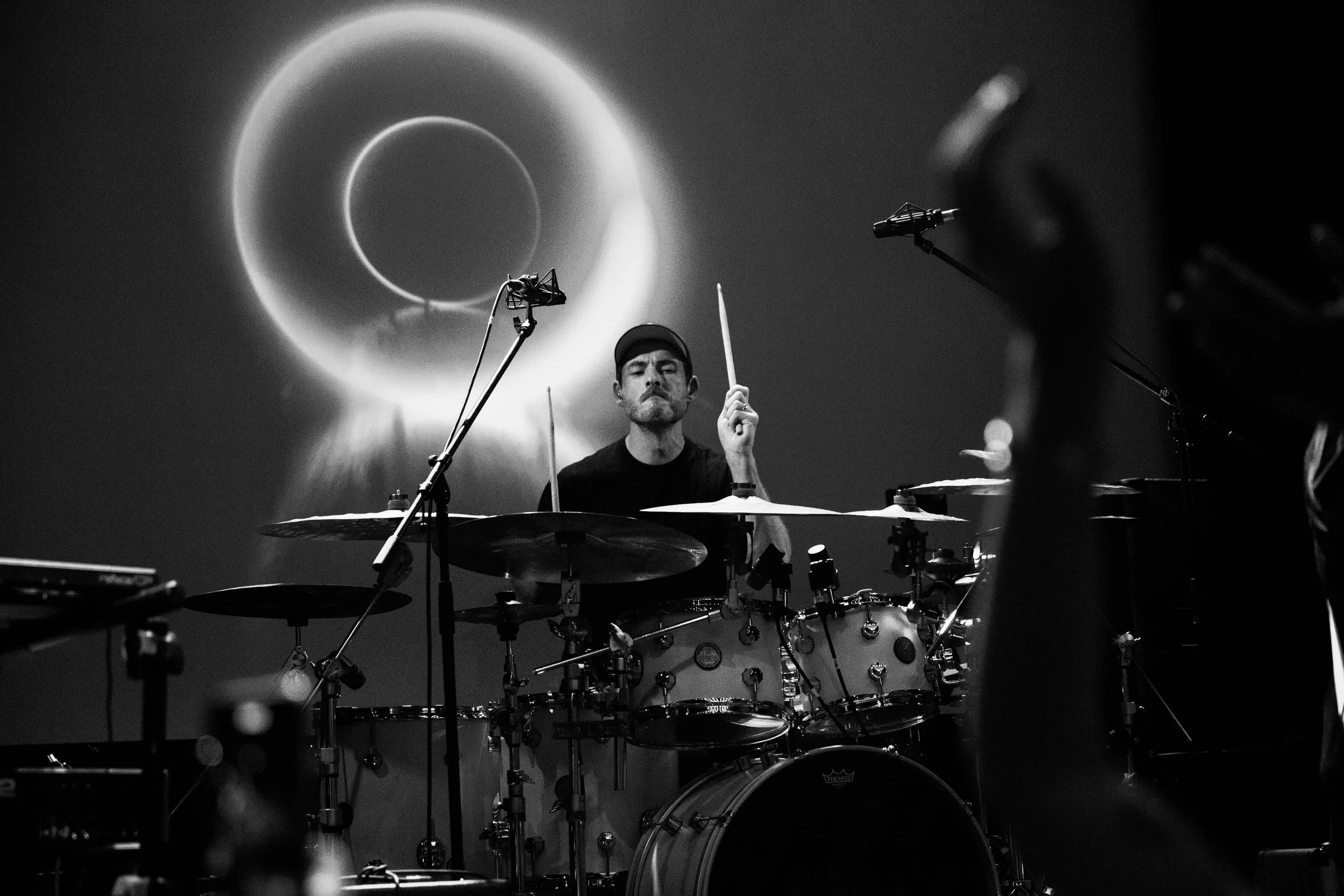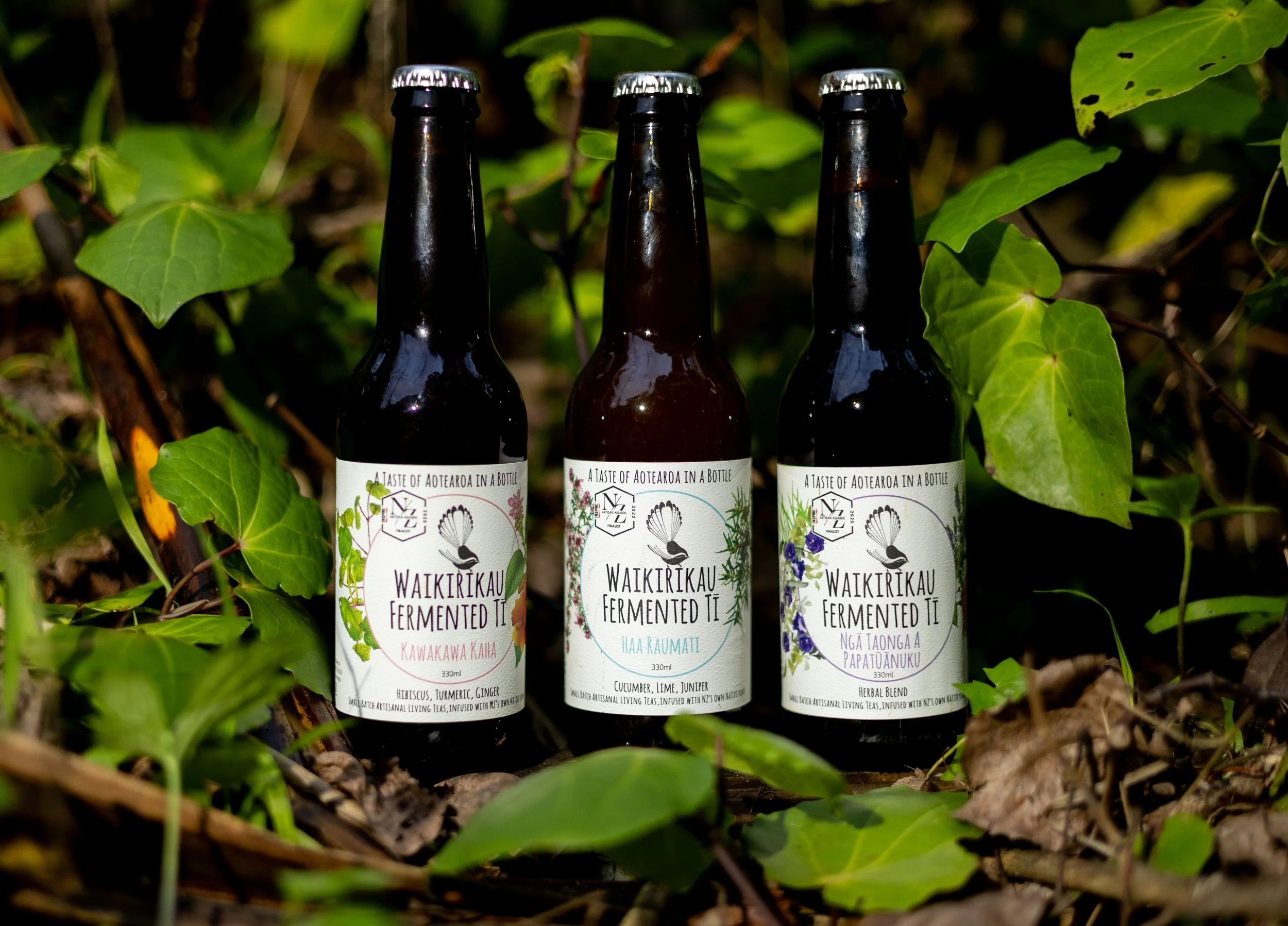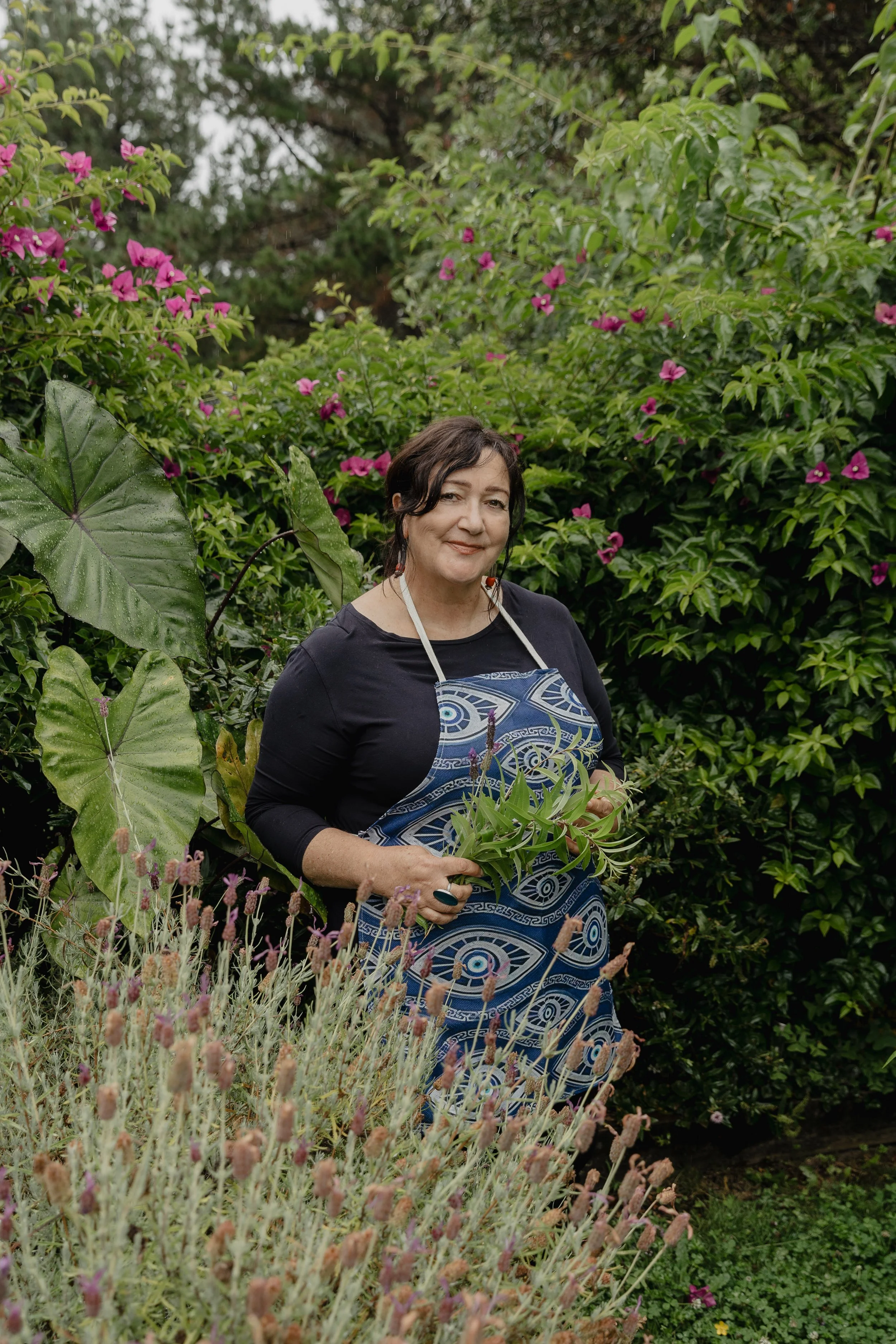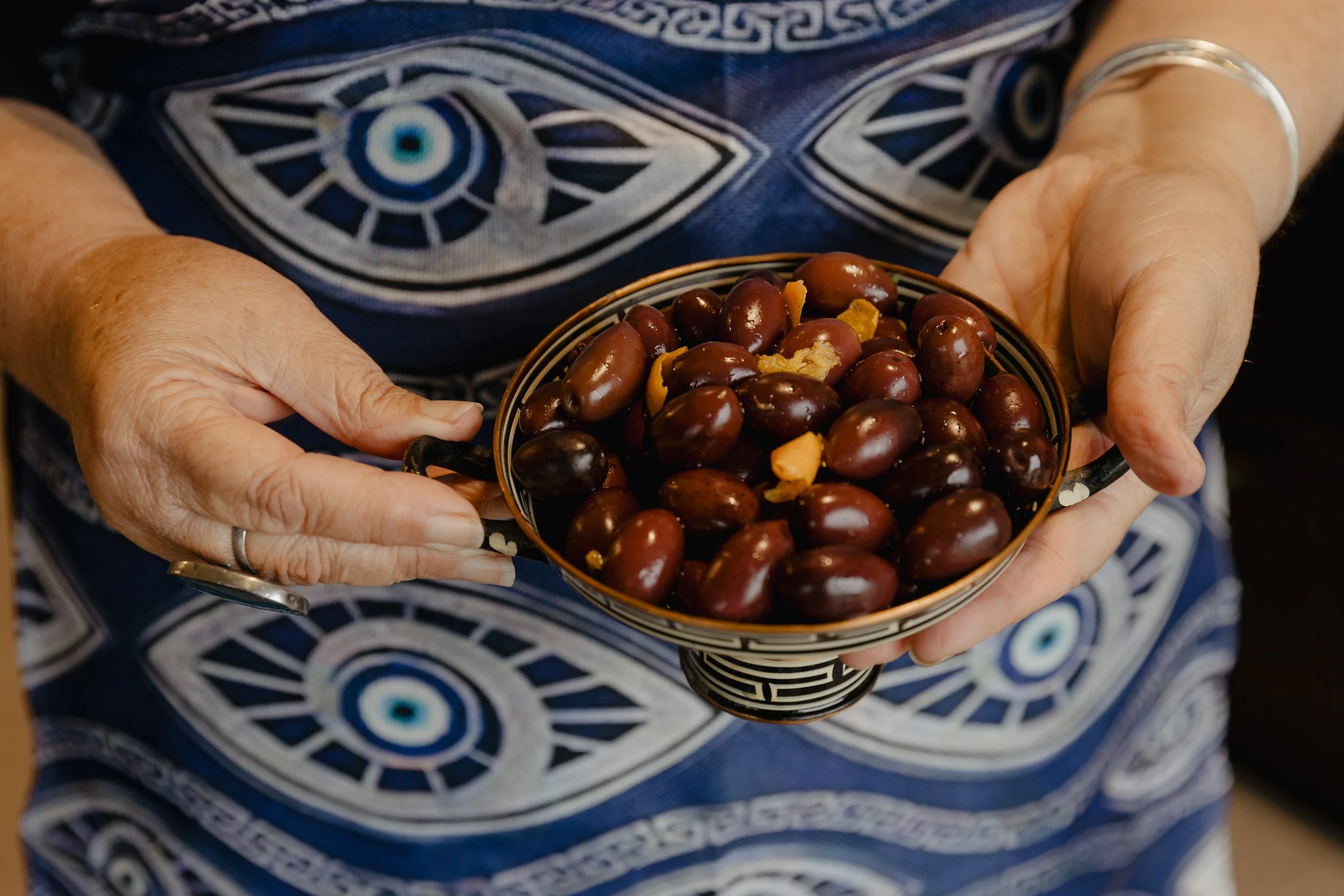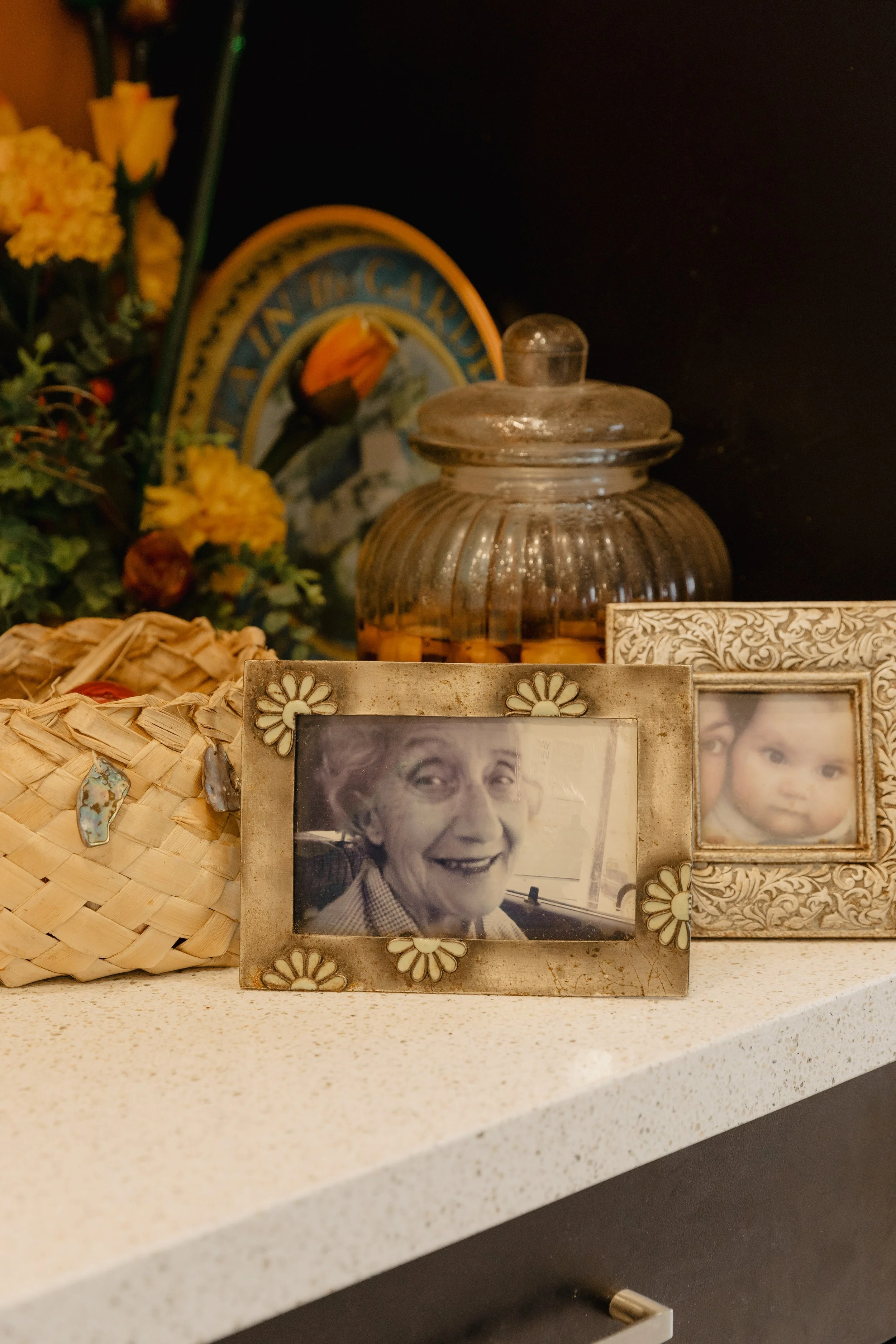EPICUREAN ESCAPE
Downtown Tauranga’s finest dining gems are raising the bar when it comes to exquisite cuisine. Discover a taste of sophistication at every turn.
Downtown Tauranga’s finest dining gems are raising the bar when it comes to exquisite cuisine. Discover a taste of sophistication at every turn.
CLARENCE
Tauranga’s diners know Clarence well. Set within one of the city’s landmark heritage buildings, the old post office, it offers a Mediterranean-inspired menu shaped by the seasons and driven by local produce. The relaxed yet refined atmosphere is ideal for an unhurried lunch, formal dinner or simply a glass of wine that turns into another. 51 Willow Street
SAINT WINE BAR
One of the best curated wine selections in town also comes with a selection of delicious seasonal shared plates. What screams summer better than a white anchovy doughnut, wagyu tataki or tuna crudo, washed down with a glass of Sparkling Albariño, or a Deep Down Blanc? Check the Saint Wine Bar socials for opening hours as they are subject to change each week.
105 The Strand
HARBOURSIDE RESTAURANT
Overlooking Tauranga Harbour, Harbourside Restaurant blends modern fine dining with relaxed coastal charm. Housed in a lovingly restored 1930s yacht club, it’s a family run gem where Peter and Anita Ward, their son Cameron (head chef) and daughter-in-law Nicole (maître d’) create a beautiful all-round dining experience. The menu celebrates fresh, seasonal produce from local growers, crafted into flavour-driven dishes that reflect the Bay’s bounty. With sweeping waterfront views, Harbourside offers an elegant yet unpretentious taste of Tauranga at its best.
150 The Strand
1920 CUCINA & GRILL
New to The Strand, Cucina and Grill offers a distinctive waterfront dining experience, housed in an historic 1920s building. The menu brings together Italian culinary traditions and the smoky flavours of Brazil’s Pampas grills. Share starters like Shiitake Arancini or Lamb Croquettes, then move to mains such as Pressed Pork, Lamb Rump or 12-hour slow-cooked Beef Ribs for two. Seasonal pasta and risotto, including Kumara Gnocchi and Mare e Monti, complement a relaxed atmosphere all year round.
85 The Strand
1920.CO.NZ
PICNICKA
For those looking to dine in style, look no further than Picnicka. A vibrant open-air restaurant in the heart of Downtown Tauranga, Picnicka celebrates local produce, offering dry-aged meat cuts and a curated wine list. Designed for long lunches, after-work drinks and weekend gatherings, it’s a place where great food and people come together.
2/38 Elizabeth Street
TRINITY WHARF
Perched on the waterfront, Trinity Wharf’s restaurant offers stunning harbour views from both its sun drenched interiors and inviting deck. Guests can pair elegant, seasonal dishes with an expertly curated selection of wines, craft beers and cocktails. For a more indulgent experience, traditional High Tea adds a touch of sophistication. Open daily for breakfast, lunch, drinks and dinner, it’s the ideal spot to enjoy one of the best harbour-side dining views.
51 Dive Crescent
MACAU
Step into Macau Restaurant on Tauranga’s waterfront for contemporary Asian flavours and share-style dining. This award-winning spot delivers communal plates inspired by pan-Asian fusion. Think fresh local produce, Pacific twists and big bold flavours. Their upstairs lounge offers creative cocktails and sweeping harbour views, and it’s available for private events or larger groups.
59 The Strand
THE BARREL ROOM
A cosy microbar and eatery serving finely crafted drinks and flavour-packed bites, The Barrel Room is where you will always find the perfect pour. With their epic weekday lunch deals, regular live music and events, a rotating selection of beverages sourced from top breweries, wineries and distilleries across New Zealand and beyond, it’s a great haunt for after-work drinks or settling in on a weekend.
26 Wharf Street
FLORENCE BISTRO
One of Tauranga's newest restaurants, Florence Bistro is full of Mediterranean charm, with fresh pasta, grilled seafood, crisp seasonal salads and rich comforting meats at the heart of every plate. It’s unfussy, with flavour packed cooking made with love, good oil and fresh ingredients that speak for themselves. Their menu is testament to the belief that great food doesn't need to be complicated to be exquisite.
90 Devonport Road
THE HOP HOUSE
The Hop House offers some of the best hand-crafted burgers and pizzas in town. Quality ingredients and house-made sauces combine to deliver a flavourful experience at an affordable price. Add in a tasty brunch menu on the weekends or their famous Sunday Roast Lunch and you can't go wrong. Good beer and coffee, as well as great vibes and friendly service, is a top priority for this family-owned bar and eatery.
12 Wharf Street
ITALIAN TOUCH
Hayley Barnett checks out Tauranga’s hot new spot for serious meat lovers, 1920 Cucina and Grill.
Hayley Barnett checks out Tauranga’s hot new spot for serious meat lovers, 1920 Cucina and Grill. PHOTOS ILK PHOTOGRAPHY
The husband and wife team behind the Mount’s Mamma Mia Trattoria have crossed a bridge — both metaphorically and literally — to fine dining. Though they’d never admit it and are quick to assure me that this new establishment is much more relaxed than it looks. As we sit in a beautiful heritage building, with its elegant high ceilings and the meat cooked to perfection, it certainly feels close.
Having recently opened 1920 Cucina and Grill at 85 The Strand, Luciano Souza and his wife, chef Cimone Juliani, decided to pour their heritage, history and hearts into this new venture, and it shows.
The couple, both born and raised in southern Brazil to Italian families, carry two culinary cultures in their bones, and for 13 years, the pair’s Mount customers would rave, again and again, about the pasta, but also, oddly enough, the steaks. “Some days I cooked more steak than pasta,” Cimone laughs.
While they’ve always stayed close to their Italian roots, they also dreamed of showcasing the rustic barbecue traditions they grew up with.
“In our region, every house has a barbecue,” Luciano explains. “If you’re not hosting one, you go to someone else’s.”
Barbecuing is as natural as breathing, and when paired with the technique-driven Italian dishes they were raised on, the couple found that a new kind of offering emerged. “We thought, why not focus on meat but keep our Italian touch?” says Cimone.
At 1920 Cucina & Grill, that balance is highlighted in the menu. They use premium New Zealand meat, which is something the pair say they appreciate more after years spent cooking abroad.
“The flavour here is amazing,” Luciano says. “It’s tender, fresh, really good to work with.”
Beef Tartare
Among the dishes earning early attention is the Beef Tartare, a first hint that this might be pretty close to fine dining. The Surf and Turf Carpaccio feels equally indulgent. And Luciano’s beloved Beef Ribs embrace that charcoal-barbecue soul he grew up with, cooked low and slow for bone-hugging flavour.
“We don’t like to think of the menu as being a fusion of flavours, but more a harmony of heritage,” says Cimone.
“Much like the structure that houses us, our Cucina & Grill is grounded in history,” adds Luciano. “Our aim is always to bring to the table traditions passed down by generations of our Italian and Southern Brazilian family.”
Pressed Pork with Parmigiano Risotto
The name 1920 is inspired by the era in which 85 The Strand was built and pays tribute to one of Tauranga’s oldest and most iconic buildings. Behind the scenes, the duo are steadily working toward an even bigger dream: a full charcoal kitchen, the kind used across Brazil, Argentina and Uruguay.
“That’s our second phase,” Cimone says. “We want people to know us first, then we’ll bring in the real barbecue.”
For now, it’s not fine dining, they continue to assure. The couple want the new restaurant to be a place where diners can gather and taste the story of two cultures, but mostly where people feel comfortable while eating good food. They’ve certainly achieved that, and if a little fine-dining magic slips through, well I’d say that only adds to the charm.
85 The Strand, Tauranga
WHAT’S ON
Tauranga’s event season is in full swing. A mix of sport, music and big-name performers are bringing plenty of life to the city. Whether you’re staying local or hosting visitors, there’s so much to see and do.
Tauranga’s event season is in full swing. A mix of sport, music and big-name performers are bringing plenty of life to the city. Whether you’re staying local or hosting visitors, there’s so much to see and do. “This summer is going to be huge,” says Tauranga mayor Mahé Drysdale. “Our city will be buzzing with events for everyone. Locals can enjoy an incredible line-up right here at home, and visitors will get to experience Tauranga at its absolute best – welcoming and full of energy.”
BLACKCAPS VS WEST INDIES — TEST MATCH December 18–22 — Bay Oval
Five days of classic summer cricket as the BLACKCAPS face the West Indies. Experience a lively crowd, great match-up and that unmistakable Bay Oval atmosphere.
L.A.B. & STAN WALKER
December 27 — Wharepai Domain
Two of Aotearoa’s most loved acts return for an afternoon and evening of music in the heart of the city. A strong line-up and a cruisy festival feel is exactly the kind of day Tauranga does well.
NEW YEAR’S EVE CELEBRATIONS
December 31 — Tauranga city centre, Mount Maunganui, Greerton, Matua, Pāpāmoa
Music, entertainment, food trucks, and a 9.30pm fireworks display at all sites (except Greerton which has a light show). A relaxed, fun New Year’s Eve for families and anyone keen to stay close to home.
HOT SPRING SPAS T20 BLACK CLASH
January 17 — Bay Oval Team
Rugby squares up to Team Cricket, led by Kieran Read and Dan Vettori. Fast, noisy and full of personality, this event is always a crowd-pleaser.
JIMMY CARR — LAUGHS FUNNY TOUR
January 25 — Mercury Baypark
A night of sharp, unapologetic comedy from Jimmy Carr as he brings his latest tour to Tauranga.
BAYPARK SPEEDWAY — SUMMER SERIES
Various dates — Mercury Baypark
Stadium High-powered racing, packed stands and full-throttle excitement, the summer series is back with a full run of events.
THE CHIEFS VS FIJIAN DRUA
January 30 — Blake Park
Get ready for a summer showdown as the Chiefs take on the Fijian Drua at Blake Park. Expect high-energy footy, electric fan spirit, and a warm-weather evening out for friends, families and rugby lovers alike.
FISHER
January 31 — Bay Oval
Global dance heavyweight FISHER becomes the first artist to stage a major concert at Bay Oval – set to be the biggest party the Bay has ever seen.
UB40 FEATURING ALI CAMPBELL
February 7 — Bay Oval
A summer favourite, with Ali Campbell bringing the Red Red Wine and a stack of hits to Bay Oval, all wrapped in an easygoing festival feel.
BEAST OF A FEAST
February 28 — Soper Reserve
Tauranga’s not-so-typical beer, food and music festival returns, featuring Ladi6, Avalanche City and P-Money.
TOI TAURANGA ART GALLERY
Current exhibitions — Tauranga
The gallery has reopened with a fresh line-up of exhibitions from artists across Aotearoa, Australia and the Pacific. It’s definitely worth stopping in to see what’s new.
Classic hits
Just a Mum’s Anna Cameron has been cooking up a storm for her new book, featuring an indulgent collection of family-friendly favourites. Here we serve up a few of the hits.
Just a Mum’s Anna Cameron has been cooking up a storm for her new book, featuring an indulgent collection of family-friendly favourites. Here we serve up a few of the hits.
French Apple Cake
A timeless classic, traditionally made with very thin slices of apple in a rum or almond infused batter. My version is quick and easy, perfect for afternoon tea or as a dessert served with yoghurt.
MAKES 12 | PREP TIME 30 MINUTES + COOLING | COOKING TIME 35+ MINUTES
INGREDIENTS
4 large apples, peeled and cored
1 cup plain white flour
1 tsp baking powder
1⁄4 tsp salt
115g butter, at room temperature
2/3 cup white sugar, plus extra
to sprinkle
2 eggs
2 tbsp milk
1 tsp vanilla essence
1 tsp almond essence
Icing sugar to dust (optional)
METHOD
Preheat the oven to 175°C, positioning an oven rack in the centre. Grease the base and sides of a 22 cm-round springform or loose-bottomed cake tin and line it with baking paper.
Cut the apples into 1 cm pieces (you should have about 3 cups) and set aside.
In a small bowl, whisk together the flour, baking powder and salt. Set aside.
In a stand mixer fitted with a paddle attachment, cream the butter and sugar for 4 minutes until light and fluffy.
Add the eggs one at a time, mixing well between additions, then beat in the milk, vanilla and almond essence (see notes). The mixture may look a little curdled at this stage.
Gently fold in the flour mixture until no flour is visible then fold the apples into the batter until evenly distributed.
Spoon the thick batter into the prepared tin and smooth the top. Sprinkle an extra 2 tablespoons of sugar evenly over the top.
Bake for 35 minutes, or until the top springs back to the touch and a skewer inserted into the centre comes out clean. If needed, continue to bake, checking every 3–5 minutes, until the cake is fully baked and golden. If the top of the cake is becoming too golden brown, loosely cover in foil until baked through.
Allow to cool in the tin for 20 minutes, then carefully transfer to a wire rack.
Serve warm or cold, dusted with icing sugar if desired — it’s lovely with whipped cream or yoghurt.
This cake can be stored at room temperature, loosely covered with a cake cover or tented foil, for 1–2 days, or in an airtight container with a paper towel to absorb moisture for 3–4 days.
Chicken and Bacon Fettuccine
This oh-so indulgent pasta dish is a quick midweek meal to make when you feel like something a little bit fancy.
SERVES 4 | PREP TIME 15 MINUTES | COOKING TIME 20 MINUTES
INGREDIENTS
300g fettuccine
45g butter
7 rashers streaky bacon, diced
300g skinless, boneless
chicken breast, thinly sliced
1⁄2 onion, finely diced
2 cloves garlic, minced
6–8 button mushrooms,
cleaned and sliced
11⁄4 cups cream
1⁄2 cup parmesan, finely grated
1 red capsicum, finely sliced
METHOD
Bring 3 litres of salted water to a boil in a large saucepan. Add the fettuccine and cook for 2 minutes less than the packet instructions. Drain, reserving 3⁄4 cup of the cooking water. Set aside.
While the pasta cooks, heat 15g of the butter in a large frying pan. Fry the bacon until crispy, then drain on a paper towel.
In the same pan, sear the chicken slices in the bacon fat for a few minutes on each side until just cooked. Set aside on a plate with the bacon and cover with foil.
Wipe the frying pan with a paper towel, then melt the remaining 30g butter over a medium heat. Add the onion and garlic and cook for 2 minutes until translucent. Add the mushrooms and cook for about 4 minutes until softened and well browned.
Stir in the reserved pasta water and the cream, parmesan and capsicum. Bring to a gentle boil and simmer for 2 minutes.
Add the drained fettuccine to the sauce, using tongs to toss and coat thoroughly. Fold in the bacon and chicken and heat through for a further 2 minutes until the chicken is cooked.
Serve immediately in bowls, garnished with parmesan and parsley if desired.
Roasted Cauliflower and Chickpea Salad
This salad looks stunning on the table. I love the combination of flavours and textures — the crunch of the chickpeas works beautifully with the softly spiced cauliflower. It’s definitely one to try.
SERVES 6+ | PREP TIME 30 MINUTES | COOKING TIME 50 MINUTES
INGREDIENTS
1 head cauliflower
420g can chickpeas
1 tsp turmeric
1 tsp ground coriander
1⁄2 tsp paprika
1⁄2 tsp onion powder
1⁄2 tsp garlic powder
1⁄2 tsp salt
1⁄4 tsp pepper
1⁄4 cup olive oil
Dressing:
1⁄4 cup olive oil
2 tbsp lemon juice
2 tbsp honey
1 tbsp lemon zest, finely grated
1⁄2 tsp ground cumin
Pinch salt and pepper
To Serve:
Handful of rocket, torn
1/3 cup dried cranberries
1⁄4 cup slivered almonds
70g feta, crumbled
10–12 fresh mint or coriander
METHOD
Preheat the oven to 200°C. Lightly spray a large roasting dish with oil.
Cut the cauliflower into small florets — you should have about 5 cups. Place in a large bowl.
Rinse and drain the chickpeas, then pat them dry on a clean tea towel, then add them to the bowl.
Sprinkle in the turmeric, coriander, paprika, onion powder, garlic powder, salt and pepper and stir through. Drizzle with the oil and toss to coat evenly.
Spread out on the prepared tray and roast for 20 minutes. Stir, then continue roasting, gently stirring every 10 minutes, for a further 30 minutes, or until the chickpeas are crisp and the cauliflower is tender and golden but holding its shape. Set aside to cool slightly.
To make the dressing, whisk together all the ingredients in a small bowl.
To serve, transfer the cooled cauliflower and chickpeas to a large bowl or serving platter. Add the rocket and dressing and toss gently. Fold in the cranberries, almonds, feta and torn mint or coriander leaves.
Enjoy warm or cold. Store covered in the fridge for up to 2 days.
The Best Chocolate Chip Cookies
Crisp on the outside, soft and chewy in the centre, these cookies are easy to make, and you can freeze the dough for fresh cookies any time you desire. There’s nothing quite like the smell of freshly made cookies.
MAKES 26 | PREP TIME 30 MINUTES + CHILLING
+ COOLING | COOK TIME 15–18 MINUTES
INGREDIENTS
170g butter
2 cups plain white flour
3⁄4 tsp baking soda
1⁄2 tsp salt
1 packed cup brown sugar
1⁄2 cup white sugar
1 egg
1 egg yolk
1 tbsp vanilla essence
11⁄2 cups milk or dark chocolate
drops, chips or chunks
METHOD
Place the butter in a small bowl, cover and microwave in 30-second bursts until melted. Set aside to cool slightly.
In a bowl, stir together the flour, baking soda and salt. Set aside.
In a stand mixer with a paddle attachment, beat the melted butter with the brown sugar and white sugar on a medium speed for 2 minutes until well combined. Add the egg, egg yolk and vanilla and beat for 3 minutes until light and creamy.
Add the flour mixture and mix lightly until just combined. Then use a wooden spatula to gently fold in the chocolate.
Refrigerate the dough for at least 1 hour, or preferably overnight.
When ready to bake, let the dough stand at room temperature for 20 minutes. Preheat the oven to 165°C fan-forced, positioning one rack in the upper third of the oven and another in the lower third. Line two large baking trays with baking paper.
Roll 2 tbsp-sized scoops of dough into balls and arrange 5cm apart on the prepared trays. You may need to cook 3–4 batches.
Bake for 15–18 minutes, or until the edges are turning golden brown and the tops are mostly set (the larger the cookies, the longer they will take to cook).
Allow to cool completely on the trays — they will firm up as they cool.
Store in an airtight container for up to 5 days.
Images and text from Just a Mum’s Kitchen by Anna Cameron, photography by Melanie Jenkins (Flash Studios), published by Allen & Unwin Aotearoa New Zealand. RRP$45.
Centre stage
Tauranga Arts Festival will come to life with a dazzling circus, bold beats, sharp wit and homegrown brilliance.
Tauranga Arts Festival will come to life with a dazzling circus, bold beats, sharp wit and homegrown brilliance.
WORDS Monique Balvert-O’Connor
Hayley Sproull is The Baroness.
Internationally acclaimed circus performers, musicians, authors, actors and comedians will be amongst those set to thrill at the 2025 Tauranga Arts Festival. Taking to our stages will be the likes of Cirque Bon Bon, Tami Neilson, Hayley Sproull, Rhys Mathewson, Te Radar, Chelsea Winter and Catherine Chidgey to name but some. It’s an impressive line-up that also includes plenty of local talent keen to delight the crowds at their city’s flagship art festival event, kicking off over Labour Weekend.
Tauranga DJ queen Ayesha Kee.
Ayesha Kee doesn’t plan on raising the roof of the Carrus Crystal Palace, but she’s sure hoping she’ll have that glorious tent rocking.
The Tauranga DJ queen can’t wait to “slay the disco way” during the Tauranga Arts Festival where she’ll help fulfil many a dazzling disco dream. Ayesha will team up with powerhouse vocalist Lisa Tomlins to deliver a Queens of Disco event. Expect the most iconic disco anthems ever to hit the dancefloor. Think Diana Ross, some Pointer Sisters, Bee Gees… feel good music, Ayesha says, that’s likely to seduce many, of varying age groups, onto the dancefloor.
By day Ayesha is a community development manager at Kaiwhakahaere Whakawhanake Hapori. By night, well, that’s alter ego time.
“I have always loved music but never learnt an instrument, so I got into deejaying about 20 years ago. I love it so much as there’s the opportunity
to take people on a musical journey, and you just make people happy,” she beams.
Tauranga’s proud to claim her. While Ayesha’s only been Tauranga based for 10 years, Ngāti Ranginui is her iwi and Ngāi Tamarāwaho her hapu.
She will be one of an array of local talent in the spotlight over festival week.
UNO is proud to be sponsoring what’s expected to be a hugely popular festival event: comedian Hayley Sproull’s show The Baroness. It’s so named as Hayley is The Baroness sky-rocketing towards 40, with a “happily untenanted” womb and a life of love, leisure and lingus. Hayley feels less barren and more Baroness.
As a Baroness, her focus is on making “martinis, not milk. She changes her mind, not nappies. She wants durries, not diapers.” Tauranga Arts Festival attendees can rest assured she’ll be delivering not a child, but copious amounts of chuckle-worthy moments.
Tauranga Arts Festival general manager Sarah Cotter says this year’s event will be full of fun, magic and vibrancy, with world-class performances, thought-provoking conversations and experiences to stir the senses and soul.
Ozi Ozaa.
Local creatives playing a part in delivering all that wonder include the festival team’s very own content creator Fabio Camera, who, like Aeysha, cannot resist the call of music when his day job is over. Aptly, he’s a musician in a band carrying a name meaning work and happiness - Ozi Ozaa. This Afrofunk band will perform on the Tauranga Waterfront in the Carrus Crystal Palace Spiegeltent.
Still on the music front, local talent will also be showcased during two of the festival’s free events - Opus Pocket Orchestra Concert and Undergrand.
The former is focused on little listeners and will feature 30-minute concerts offering young ones a joyful, interactive introduction to orchestral music. Undergrand, meanwhile, has been dubbed “a piano
in the wild”. Imagine stumbling upon a baby grand piano in the most unexpected places, like Mount Main Beach at Sunrise, Tauranga’s waterfront after dusk, and in a city park by day. This roaming, open-air musical experience will include a line-up of up-and-coming Tauranga students and seasoned pianists playing everything from classical to jazz
to improvised soundscapes.
Battle Chorus.
Playing a key, guiding role in two events is award-winning Tauranga born and raised Jason Te Mete (Ngāti Ranginui, Ngai Te Rangi), a freelance actor, singer, dancer, director, pianist, and playwright/writer. His festival babies are Battle Chorus – where two choirs go to war — and also Waiata Mai, a free-to-all sing-along (watch out for some local legends, like a free-to-all sing-along that closes the festival on Sunday November 2.
The final days of the festival, in early November, involve Escape, with its focus on the literary. In amongst the major New Zealand fiction writers is Tauranga’s own Anne Tiernan, author of bestselling novel The Last Days of Joy (partially set in Tauranga), and (recently released) The Good Mistress.
Less joyful, but inarguably good, is the demise of the New Zealand media, and Tauranga’s investigative journalist Jared Savage will speak to this in Media Madness. Jared will join a line-up of journalists in unpacking and debating the media landscape of 2025.
Sarah Ell will also offer learning opportunities. Sarah’s recently published book The Spirit of a Place, is a new history of The Elms | Te Papa Tauranga, recognised as one of New Zealand’s most significant heritage sites. Sarah’s talk promises a rare glimpse into Tauranga’s layered past.
This part of the festival will honour the late, great Tauranga writer Sherryl Jordan who wrote beloved novels for children and young adults, including:
Rocco, The Wednesday Wizard, The Juniper Game, and Winter of Fire.
Escape invites people to “sit back, relax and immerse in a suite of scintillating conversations”, says former Tauranga resident Claire Mabey. She would know - she devised the programme. Claire, who is of strong literary pedigree, has strong ties to the festival, having been part of the organising team on previous occasions. Amongst her accomplishments,
Claire is The Spinoff’s book editor, the founder of Wellington’s Verb Festival, and author of The Raven’s Eye Runaways (and its just-completed sequel).
To end with a Z… back by popular demand is Tauranga Zinefest. This popular independent publishing event that celebrates creativity on
the fringe returns.
Undergrand's piano in the wild.
FREE EVENTS
The festival excitement includes a diverse range of family-friendly and free events offering the chance to be wowed, to sing your heart out, get creative and to have a giggle or two, says its proud and excited general manager.
“This is Tauranga’s festival, and we want to make it as accessible as possible to as many Tauranga people as we can,” Sarah says.
Some of the free events (Undergrand, Zinefest, Opus Pocket Orchestra Concert) are mentioned above. Add to that Waiata Mai, Obelisk Natura and CAR-A-OKE!
For show times and tickets, visit taurangafestival.co.nz
Reggae, revolution and red red wine
Karl Puschmann catches up with Ali Campbell, the legendary UB40 frontman, to talk band beginnings, protest and politics, their big hits, and why he can’t wait to bring the band’s reggae vibes back to the Bay.
Karl Puschmann catches up with Ali Campbell, the legendary UB40 frontman, to talk band beginnings, protest and politics, their big hits, and why he can’t wait to bring the band’s reggae vibes back to the Bay.
Ali Campbell is bleary-eyed but upbeat when UNO calls. It’s 8am in the UK, and the UB40 frontman only got home from a European festival tour yesterday.
“It’s all a bit mad here,” he jokes, before settling in for a breezy and candid chat about UB40, the influential reggae band he co-founded in 1978 and led to global success before inner band turbulence saw them splitting into two groups.
But before getting into the past, we need to talk about his future return to Aotearoa to headline music festival Kingston Calling this Waitangi Weekend. The brand new reggae tour, with seven stops across the North Island, also features Katchafire, The Black Seeds and Corrella.
“I’m very, very happy to be coming back. It’s one of my favourite places,” he enthuses. “I’ve got a lot of friends there, a lot of Māori friends, so we always have a great time. It's a beautiful country.”
Then he pauses and says, “There are some weird things happening politically that I'm not too sure of. I've heard about the new Prime Minister... I've got to look at all that.”
You may think it’s unusual that a British music icon would know about or even be interested in our politics, but Ali has a long history with our country. He lived here for months when he was a judge on reality show New Zealand’s Got Talent back in 2012, his current tour manager is Māori and he’s even taken the time to read something that a lot of us haven’t; the Treaty of Waitangi.
“I lived in the middle of Auckland in the Viaduct. I know my way around,” he laughs. “And, of course, we've travelled extensively around both the North and the South Islands.”
Aotearoa’s always had a huge love for UB40. This stretches right back to the band’s cracking debut single, the politically charged deep reggae groove of Food For Thought, which topped our charts in 1980, to give the band their first-ever Number One hit. But when I ask why he thinks the band has resonated with us Kiwis so much, he’s modest, saying, “It’s not UB40 that people love. It's the music. People love reggae music.”
“Reggae is unifying, and it's still cool today,” he continues. “That's the important thing. It's still cool. People like us because we're an accessible reggae band.”
Ali grew up in South Birmingham, “on the wrong side of the tracks,” as he says, surrounded by the colourful sounds of the Caribbean and Asian cultures that were his neighbours. Unlike most of England at that time, it was a true multicultural environment, and one that impacted his world view.
“I was very lucky. I had Jamaican, Indian, West Indian and Arabic friends. I grew up amongst this melting pot. I loved it. It gave me a broad outlook on life. I wasn't prejudiced against anybody. Just fascists, I didn't like them. I’d go to a lot of anti-fascist demos and all that stuff. But we'd do it all together.”
Then grinning he adds, “And generally, the police were our enemies. Everybody else was friends.”
Aged 15 he went and saw Bob Marley and the Wailers in concert. It would be a transformative experience.
“It was like seeing the Messiah. I was totally blown away,” he says, a note of awe still resonating in his voice. “The year before that, I'd seen the Jackson 5. And that also blew me away because I was a mad Jackson 5 fan as well. Those two years basically showed my musical future to me. It was life-changing.”
After the show, he decided to form a band. But his plan had two big problems.
“We didn't know how to play. And we didn't have any instruments, so we... acquired our instruments, let's say,” he laughs. “We were on the dole, so we couldn't go and buy them. We had to acquire them.”
With instruments “acquired”, all they had to do next was learn how to play them. To do this, they continually played the 12” version of Gregory Isaacs reggae hit, ‘Mr Know It All’, which features a dub breakdown in the middle, deconstructing each part and slowly working it out by playing along. Eventually, they got to the point where the record stopped and they could continue jamming.
“And that's how we learned to play. Six months later, we'd written our first album, which went on to sell eight million copies. It was ridiculous,” he grins.
That album was Signing Off, a groundbreaking and politically charged album of deep groove reggae whose music and message still resonate today.
“We followed Bob Marley's lead and other reggae artists like Lee Perry, who were political. We felt obliged if we got a platform to write something relevant. And we continue to do so.”
As an example, he cites ‘Burden of Shame’, which, when he sings it live now, has the lyrics “A baby in Gaza dies,” instead of “A boy in Soweto dies”.
“Depressingly, the songs are still as relevant as they were when we wrote them,” he sighs. “I've learned that you don't change anything by singing about it. It's as simple as that. All we're doing is voicing an opinion. It doesn't change anything. Things might have got worse even.”
As well as their political material, UB40 also explored the smoother, pop-leaning side of reggae, with their hugely popular Labour of Love albums, which saw them performing covers of the songs that had influenced them, like ‘Red Red Wine’, ‘The Way You Do the Things You Do’ and ‘Here I Am (Come and Take Me)’.
“We kept getting asked about why we played reggae, so we decided to do those albums,” he says, laughing that they’d been strongly advised against recording a covers album. Labour of Love would top global charts, including here, and go on to sell over 21 million copies.
“They’re the songs we used to hear on jukeboxes in cafés where we used to hang out as kids, playing pinball and running errands for prostitutes. We grew up listening to those songs. We loved them, and we knew that anybody else who got to hear them would love them as well. And we were right.”
After 24 years together, tensions within the band led to a split in 2008, with Ali moving on to front his own group, UB40 featuring Ali Campbell, while the remaining members continued under the original name.
“When I left it was sad, but I couldn't carry on with them. They wouldn't let me promote my second solo album, which was called Running Free, ironically enough,” he says. “All I wanted was a month off to promote it, and they were steadfastly telling me I couldn't do it, so I walked. It’s all very silly and a very petty argument. But I was quite happy to leave and I've had a great time since. I've got my new band, who are all seasoned reggae players, and I love them. That's who I'm bringing to New Zealand. I think they’re the best band around.”
Which makes them a fitting choice to headline Kingston Calling, especially as it’s the first-ever concert to be played at The Bay Oval, in the heart of Mount Maunganui.
“I'm a little bit nervous,” Ali admits when asked how it feels to be christening this new venue. “But it's fun being the first to do anything really.”
I confess to taking a sneak peek at some of his recent setlists, which gets a chuckle when I say he’s bringing some absolute bangers that will keep all fans of UB40’s multifaceted career extremely satisfied.
“It's more or less a Greatest Hits set,” he smiles. “We're not self-indulgent. We know what the people want to hear, so that's what we do.”
Purchase tickets to Kingston Calling at
A new rhythm
After calling the Waikato home all his life, Katchafire frontman Logan Bell recently moved to the Bay.
It was just two short years ago that Logan Bell, the Katchafire frontman, and his family made the move from the Waikato to Tauranga’s Welcome Bay. For his wife, who grew up in the Bay, it was a return to her roots, but for Logan it was a completely new experience. While he’d toured the world many times over with the band, the Waikato was the only place he’d ever called home.
“This is the first time I've moved away,” he admits. “We love it here. It's really awesome for our family. I love my house. I'm a total homebody. I don't go anywhere else”.
Then he laughs and says, “I’m nearly a real local now, bro. I almost don't need Google Maps to get around now.”
Already, he says, the relaxed lifestyle, beachtown vibes and the musical community here in the Bay has begun to influence his music.
“Your environment and your vibe always has a lot to do with what's coming out creatively. This morning I was in the studio with Tiki Taane. The other week, me, Laughton Kora, Fran Kora and Joel from LAB got together and had a bit of a jam. It's just a nice community here and a nice vibe for me.”
Over their almost 30-year-long career, Katachfire has become one of Aotearoa’s most beloved reggae bands, first coming to national attention with their 2003 debut album Revival, before building an international audience through hits like ‘Frisk Me Down’, ‘Giddy Up’ and ‘Get Away’ and going on to tour with legendary reggae acts like The Wailers, Shaggy, Lauryn Hill, and, of course, UB40 who they’re sharing the stage with at Kingston Calling.
“We’re blessed to get the call up,” he smiles. “UB40 has always been a huge inspiration of ours, we kind of modeled our career off them. We’ve followed their example and their path in a lot of ways.”
While music styles come in and out of fashion, reggae’s popularity has never waned, especially here in Aotearoa. This, Logan says, is because
reggae is the “people’s music”.
“It touches on matters of truth. And a lot of it's to do with the underdog truth, the sufferer's truth. We, as a nation, are born of that. We can identify with these stories, and we have our own to tell as well. That's why I think it's so easy for us to feel connected to reggae and feel a part of the music and the messages.”
Blooms with heart
Melissa Cox has opened her lush Pāpāmoa garden, to provide local brides with budget-friendly blooms that are all grown with love.
Melissa Cox has opened her lush Pāpāmoa garden, to provide local brides with budget-friendly blooms that are all grown with love.
WORDS JO-MARIE BAKER | PHOTOS KATIE COX
Flowers add a glorious touch to weddings and other special occasions but can often set you back thousands of dollars.
That’s why avid gardener Melissa Cox is now offering an affordable alternative by launching a new business called Pāpāmoa Pick Your Own Flowers. Here you can help yourself to as many blooms and as much greenery as you can carry for just $100.
Dubbed ‘the little garden with a big heart’, Melissa wants to help those who cannot afford traditional florist services.
“I love florists but I remember how stressful it was to not only plan a wedding, but to pay for it. I’m filling a niche for people who don’t have the money in this economy but still want pretty flowers for their wedding, baby shower, birthday, tangi or corporate event.
“I firmly believe in community and helping each other out. I’m already growing flowers in my garden, so if you need them, take them.”
Melissa also goes the extra mile to make flower picking a special experience by playing relaxing music and serving cold drinks and biscuits. “People just need to bring their own buckets. I’ll provide scissors and garden gloves,” she smiles.
Only two bookings per week are available between October and April, to ensure there’s enough flowers to go around. Brides-to-be can bring up to three helpers with them, and have a maxiumum of one hour to pick whatever they like from Melissa’s home garden.
“My favourite are lilies because they’re just like starbursts of happiness. Calla lilies were my wedding flower, and royal lilies are incredibly fragrant. I really love ferns too, so I have several kinds growing here. I love everything that looks whimsical.”
The scent of lavender greets everyone who visits this standard residential-sized garden. But in spring and summer it’s bursting with dahlias, hydrangeas, carpet and long-stemmed roses, gerberas, gladioli, statice (sea lavender), African daisies, flowering herbs and every shade of green foliage imaginable. “I have lots of random wildflowers everywhere too. I never know where they’re going to pop up!”
People are welcome to visit in autumn and winter also, where for a discounted price of $75, they can pick any greenery they like along with long-stem lavender, African daisies, pink camellias and flowering jade.
While most people are happy to assemble their own bouquets, vases or table arrangements at home, Melissa can whip up a bridal bouquet for $50 or a bridesmaid bouquet for $25 if floral arranging isn’t your forte.
“My mum was an interior decorator and a dried flower arranger who ran her own gift shop. On the side she also did fresh flower bouquets to order, so she taught me how to do a good job of arranging a bouquet.”
Melissa can also source affordable supplementary blooms or specific colours that people might require from other local growers. “There is a wonderful dahlia grower in Tauriko who I partner with. For $25 I can have a bunch of high-end dahlias waiting here for you in whatever size or colour you want, depending on the season.”
Melissa developed her garden from scratch during Covid lockdowns after buying her Pāpāmoa home in 2020.
“I garden for therapy. It’s proven to be good for you. Serotonin, your happy hormone, increases when you’re in the sun, in the dirt, and connecting with nature.”
Melissa’s secret is to water regularly and feed the garden heavily with fertiliser. She never uses pesticides, instead spraying plants with neem oil and apple cider vinegar to keep bugs and diseases at bay.
“Unless it’s a drought, things will flower. Because when you cut them back, they want to flower more. I grow a lot from seed and from cuttings from friends. I’m installing new flower beds at the moment because of the interest in this business. I’m planning to put in more hydrangea -really cute little ones that are white. And more wildflowers because they reseed themselves.”
Melissa’s goal isn’t to make money from her new business. “The only reason I charge is to help pay for my fertiliser. I hope this garden can help a lot of people.”
Beyond the surface
Artist Jacki Barklie fuses emotion and bold experimentation to create striking, unconventional works.
Artist Jacki Barklie fuses emotion and bold experimentation to create striking, unconventional works.
For over three decades, Jacki Barklie has explored the delicate interplay between human connection and identity through both her creative professions, first as a hairdresser and now as a multi-disciplinary artist.
With roots in Africa and a passion for the psyche, her work delves into themes of fragility and desire, often expressed through mixed media, printmaking, textiles and photography.
After completing a Bachelor Degree in Creative Industries, Jacki embraced experimentation and introspection, creating art that pushes boundaries and celebrates the unconventional. Here she shares insights into her process, and the emotional resonance behind her evocative works.
UNO: How did your creative background in hairdressing shape your approach to art today? Jacki: Hairdressing trained my eye for form, texture and design. It was sculpture in motion. I treated hair like fabric, shaping and layering with intention. Competing creatively honed my skills, but it was always about the human connection. Listening to people and understanding their emotional relationship with aesthetics now flows into how I create and share my art.
You were brought up in Africa. Can you share a specific memory or cultural influence that continues to inspire your art? Africa lives in my bones. There, creativity comes from what’s at hand, such as clay, dyes, dust, fabric. That bold innovation still inspires me. I remember painting with earth and watching patterns emerge from chance. Sometimes, I feel you can almost smell African dust in my work. Its textures, warmth and raw energy continue to guide my hands.
What was the turning point that led you to pursue a Bachelor Degree in Creative Industries later in life? After 37 years in hairdressing and countless night art classes, I craved full immersion. I didn’t want a traditional fine art degree. I needed one that embraced creative risk. The Creative Industries degree was a perfect fit for me. I’m a multimedia artist whose work evolves from one material to the next.
How do you decide which medium, whether acrylics, textiles, printmaking or photography, best suits the idea or emotion you’re trying to express? It starts with a feeling or story. From there, I follow the materials that speak to that idea. I explore the tension between materiality, light and shadow, stillness and movement. Whether I choose textiles or ink, the medium must hold that emotional vibration. It’s instinctive, process driven and always rooted in intention.
What role does experimentation play in your creative practice? Experimentation is everything. I’m a curious artist drawn to risk and discovery. I often research ancient methods and remix them with contemporary techniques. I love when the unexpected happens, like when a material surprises me. That’s where the magic is. Every piece starts as a question, and sometimes the answer comes through failure.
How do you think our environments shape our emotional or psychological states? We’re deeply shaped by our surroundings. My art often reflects the fractured rhythms of the world and offers a kind of stillness in return. I explore contrasts in form, reflection, old and new, raw and refined. Within these tensions, I find beauty. My work invites presence, asking viewers not just to look, but to feel.
As someone who celebrates the unusual, what draws you to the unconventional or unexpected? The unexpected excites me – it’s alive and full of truth. While I admire tradition, I often find it too familiar. The unconventional feels raw and present. It’s not trying to be anything but itself. That honesty inspires me. It challenges the rules, breaks them if needed and that’s where true innovation begins.
How do you stay true to your raw, emotionally-driven approach? I know my “why.” I show up in the studio daily and follow what feeds my soul. I let the process guide me, not trends. I create art that moves me first, trusting that it will resonate with someone else. If I had to make formulaic work, I’d lose the heartbeat. Emotion keeps it alive.
What advice would you give to someone wanting to explore their creative side later in life? Start now. But take it seriously. Don’t shrink yourself to ‘just crafting.’ Be brave, be messy, try everything. Follow what excites you. Let failure be part of the fun. You’re never too old to become who you are creatively meant to be. The second half of life is the perfect time to rediscover yourself.
How long have you been in the Bay and what do you love about it? We’ve been in the Bay for 27 years. It has been our longest home since emigrating twice. The weather drew us in, but our friends and pace kept us. My husband is my rock, and our home is a sanctuary. Our grown kids are flying, and I’m living the dream with my studio, surrounded by light, love and space to create.
Jackie is holding a solo exhibition titled ’SURFACE TENSION' from October 24 to November 2, celebrating her new body of work.
A taste of Somethin’ Somethin’
Mount Maunganui’s cheekiest café is shaking up the scene with matcha magic, cult-status offcuts and a drinks menu that’s anything but ordinary.
Mount Maunganui’s cheekiest café is shaking up the scene with matcha magic, cult-status offcuts and a drinks menu that’s anything but ordinary.
WORDS Hayley Barnett | PHOTOS Rachel Hadfield, Timmo and Sarah Brooky
Tucked behind a couple of shops on Mount Maunganui’s Heath Street is a café where somethin’ cool is brewing. And I don’t mean the coffee, though that’s good, and super cool, too.
The old Heath Street Café is now being run by dynamic husband-and-wife duo Nathan and Ash, a foodie couple who admit Somethin’ Somethin’ wasn’t always the plan. In fact, Ash didn’t even know Nathan had bought the place until it was a done deal.
“I think if I’d known, I probably would’ve talked him out of it,” she laughs. Thankfully, she didn’t. What started as a spontaneous leap into hospitality has turned into one of the Mount’s most loved destinations for coffee, creative snacks and viral drinks.
Ever tried a white chocolate or strawberry matcha? Ash, now the mastermind behind the drinks menu, didn’t know what matcha was at first, but, since learning about the healthy beverage, she’s gone
deep down the rabbit hole.
“I just started Googling and experimenting,” she says, “and now people literally drive from out of town for our drinks.”
These drinks aren’t just photogenic, they’re genuinely delicious. And yes, they make great content for the ‘gram, but what really sets Somethin’ Somethin’ apart is how it doesn’t try to be just another café.
“We didn’t want to open a regular place,” Ash says. “We wanted to do something a little different. We wanted to make it a place people go out of their way for.” And they have. From their now-iconic “offcuts” (random bits of delicious baked goods that became so popular they now sell out daily) to their ever-evolving menu inspired by international coffee trends, Somethin’ Somethin’ is always doing, well, something.
Take their trip to the Melbourne Coffee Expo earlier this year, for example. That sparked an entire menu revamp.
“In Melbourne, people take their coffee so seriously,” Ash says. “Every café had its own coffee menu, cocktail-style. We came home and thought, why aren’t we doing that?”
Now, they serve up seasonal coffee specials that go beyond the flat white, like their signature Mount Blanc.
Food-wise, Nathan brings the ideas. A self-proclaimed foodie who never wanted to be “on the tools”, he’s the brain behind the food menu, while their tight-knit kitchen team brings them to life. After winning Battle of the Snack at the Flavours of Plenty festival, they also took out the People's Choice Award, beating local heavyweights. “We didn’t think we’d win again,” Ash says. “I didn’t even go into work that day!”
And while it still looks and feels like a café (for now), Somethin’ Somethin’ is constantly pushing the boundaries. With event catering and collabs with local brands, Ash and Nathan are dreaming bigger than just brunch. “We want it to be a community hub,” says Ash, “but also a destination café. The kind of place you tell your friends about.”
They’ve nailed both.
Raising spirits
How three Bay distilleries are redefining New Zealand gin.
How three Bay distilleries are redefining New Zealand gin.
PHOTOS Alan Gisbon + Erin Cave + Supplied
George White and Stephanie Downer's successful Clarity Distilling Company started as a hobby.
It might seem unlikely, but behind the roller doors of a nondescript unit in Tauriko’s commercial estate, two friends are crafting one of the world’s best gins. Just 25 minutes away in another small space in Ōmokoroa, a similar story is unfolding as two friends blend botanicals to bring their award-winning gin to life. And just over the hill, in Matahui, gin drinkers can bottle their own creation - and become award winners themselves.
Far from being on the rocks, gin is obviously continuing its recent resurgence. The clear spirit has gained popularity thanks to its clean herbal aromatics and botanical complexity. Because gin can be produced relatively quickly, small-batch makers have embraced it as a space for creativity, developing unique signature styles and exciting flavour profiles. Juniper remains the foundation, of course, but now it’s not unusual to find exotic ingredients like mānuka, licorice, or Szechuan pepper in the mix, adding bold new twists to traditional flavours. Small independent distilleries in the Bay of Plenty are at the forefront of the gin revolution here in Aotearoa.
Clarity Distilling Company, Bay Distillery and Matahui Distillery are three local producers who are lovingly crafting world-class gin, right here in the Bay. While their approaches to gin differ, the three small batch distilleries share plenty in common. Each is run by a pair of hands-on founders who manage every part of the process themselves, from developing recipes through to distilling, bottling and branding.
Their gin may be internationally recognised now, winning back-to-back golds earlier this year, but Clarity started as a hobby for George White only a couple of years ago. It was something he’d do in his downtime away from the childcare centre he and friend Stephanie Downer had started.
“I’ve always been a guy that likes to cook at home and try recipes and create flavours,” George says. “Gin is open. There are no restrictions. You can do whatever you want. You can put anything into that still and create any flavour you want.”
It was George’s love of cooking that would become Clarity’s secret ingredient. Rather than traditional methods, which see all the botanicals distilled together, the pair instead steep each ingredient individually.
“When you make a gin, it’s like cooking, except you’re dealing with botanicals,” George explains. “When you cook a stew, you don’t throw your meat, herbs and everything in and shut the lid. You layer it. So why would making gin be any different to that?”
This meticulous process of distilling each element separately allows them to exactly control how much flavour is extracted and then added to their blend.
“We get the best out of every single botanical,” George smiles. “Because all that’s in our gin is the botanicals. That's where all of the flavour comes from.”
It’s proven to be a winning formula. In May, their Clarity Navy Gin was awarded ‘Spirit of the Year New Zealand’ at the prestigious 2025 London Spirits Competition. They also have multiple Double Golds from San Francisco, and took home ‘Best London Dry’ and ‘Best Navy Strength’ at the NZ Spirits Awards and NZ Small Batch Gin Awards this year.
Just as much care has gone into Clarity’s look, with Stephanie handpainting the label’s distinctive artwork and even illustrating the ingredient list.
“That’s part of our ethos,” Stephanie says. “Essentially, if it's not on the bottle, it's not in the bottle.”
The operation has quickly scaled up, now with six distillers and upgraded bottling systems. But George says they don’t want to grow for growth’s sake.
“We want to be a household gin, not a special occasion gin,” he says. “We want to be affordable. If people are going to buy gin, we'd much rather let them buy a New Zealand gin.”
Gin makers Karen Hawkins and Denise Roscoe.
It’s a similar story over at Bay Distilling, where gin makers Karen Hawkins and Denise Roscoe launched their gin after running a coffee caravan in Ōmokoroa.
“We both like coffee, so we had a coffee business,” Karen says. “And then we sold that and thought, ‘what else do we like?’ Well, we quite like gin...”
They spent a year in the garage perfecting their dry gin recipe, encouraging friends to give honest feedback, though it was mostly glowing.
“We like a classic dry gin and really wanted to get that right,” Denise says.
Their gin iti recently took silver at the NZ Small Batch Gin Awards. Now in a commercial space, they handle everything from distilling to packing themselves, with a little taste-testing help from Karen’s husband. Their
branding is rooted in the local landscape, with a label designed by Karen’s daughter.
Meanwhile, just outside of Tauranga, Matahui Distillery offers something unique: a chance for people to create their own gin, and potentially win awards for it.
“Late last year, people who had come through our gin lab were asking for feedback on their creations,” says co-founder Paul Horak. “That’s where the Matahui Gin Lab Awards came from. It’s a bit of fun, but with proper base testing and scoring of their recipes.”
Matahui Distillery’s Paul Horak and Angela Howard with their handcrafted spirits.
The gins are created through blending pre-distilled botanical spirits, a process Paul says is used by commercial distillers like Hendrick’s. “It’s actually the best way to develop a recipe,” he explains. “You can quickly see what works, then adjust quantities until it’s perfect.”
Although their signature Adventurers Gin earned silver at the NZ Spirits Awards, the focus at Matahui is on the customer experience. “We’re not aiming to become a big factory,” Paul says. “Selling direct allows us to stay small, and our workshops help fund our own small-batch experimentation.”
The experience has evolved too. Originally participants distilled on-site, but council restrictions prompted a shift in method. “In hindsight, it pushed us to improve,” Paul says. “Now we focus on flavour — people still walk away with a gin they designed, but the quality is even better.”
They’re also working on home-blending kits, so people can recreate the experience themselves. “It’s something we want to launch in time for summer,” he adds.
While many come to Matahui for birthdays or hens’ dos, Paul says it’s just as often individuals with a curiosity for gin.
“New Zealanders are still discovering gin. Every gin is unique, and that surprises a lot of people. But once they learn more about it, they’re hooked.”
These three small-batch distilleries are proving that success in the competitive spirits market doesn’t require big investors or a corporate machine. Instead, it’s passion, ambition and a classic Kiwi ‘can-do’ attitude that are putting them, and the Bay, on the map.
Echoes of the giants
Moa bones, eagle claws and ancient wonders are sparking young minds in the Bay.
Moa bones, eagle claws and ancient wonders are sparking young minds in the Bay.
WORDS JO-MARIE BAKER
Photos courtesy of the Tauranga Museum collection.
Peter Jackson’s Jurassic Park-like plan to resurrect the moa is still a long way from reality but Tauranga students can literally get their hands on the giant bird’s bones, a replica moa egg and even a life- size Haast’s Eagle claw right now.
The objects are among the most popular items in Tauranga Museum’s Hands On Collection available for local teachers to borrow, free of charge.
“We have a set of real moa bones that were found in Te Puke and they’re some of our most popular objects,” explains museum educator Megan Hoskin. “We have 14 bones in all – three huge leg bones, ribs and vertebrae. It’s incredible that children can have these in their classroom and are allowed to handle them.”
The recent addition of a replica Haast's Eagle claw (which was big and powerful enough to kill an adult moa) is also grabbing attention. “The Haast’s Eagle is something children just have an innate curiosity about. We have roughly 250 objects in our education collection that teachers can borrow. It gives a zing to a classroom and sparks excitement, enthusiasm and curiosity. If a class is learning about space, for example, we have meteorites that are four and a half billion years old. Allowing children to hold objects and pass them around is a great way to hook them into a topic.”
The collection is available to schools within Tauranga City Council’s boundary. Teachers simply book objects online and Tauranga Museum will deliver and collect them. “It could not be an easier service for busy teachers.”
Megan, a former primary school teacher, is also available to run classroom lessons on topics such as The Elms, the Battle of Pukehinahina Gate Pa, the Rena disaster, kiwi, penguins and Tauranga-related aspects of World War One. She believes it’s more important than ever to put physical objects in our children’s hands to help balance learning off digital screens.
While two generations of children have grown up without a museum in Tauranga, the wait is almost over. The city’s new museum will open in 2028 and will feature two purpose-built education spaces along with a Discovery Centre that will focus on Tauranga’s marine environment. “It’s going to be all about the ocean, islands and marine life we have here in Tauranga, so very much a science and environmental Discovery Centre. It will be a very exciting, interactive play space.”
Good eggs
High in the Kaimai Ranges, a small farm puts chickens first, and lets the eggs speak for themselves.
High in the Kaimai Ranges, a small farm puts chickens first, and lets the eggs speak for themselves.
Photos Alan Gibson
It’s a riddle as old as time and one that has left the greatest minds in history scratching their heads. But ask Karlene McGirr what came first, the chicken or the egg, and her answer is immediate.
“The chicken has to come first because that's our priority,” she smiles. “If you look after the chicken, you get a good egg.”
This philosophy drives Kaimai Eggs, the family-owned egg farm situated in the tranquil Kaimai Ranges that was started by Karlene's parents, Otto and Vicki McGirr, in 2011. Now Karlene and husband Jim are continuing to grow the family business, along with all Otto and Vicki's daughters, who are involved in aspects of the farm. The health and well-being of their chickens is something that has been paramount to the whole family since the beginning.
Karlene and Jim Brown.
“Dad's been asked ‘What makes a good egg?’ a few times over the years, and it’s simple: a good chicken makes a good egg,” Karlene explains. “There’s no other way around it.”
“You've got to have a healthy, well-fed, well-watered chicken in a good environment with good people looking after it and all the other stuff kind of just happens,” Jim adds. “Which makes sense. Of course, a happy bird is going to produce better eggs.”
Their farm, which produces free-range and barn eggs, is situated in the tranquil Kaimai Ranges, where the chooks enjoy a view of the hills that’s so stunning it’s printed on the egg carton. But spectacular views aren’t the only thing that sets Kamai Eggs apart.
Otto McGirr.
Unlike most egg producers, they look after their whole supply chain, getting baby chicks at just one day old and rearing them right up until they’re ready to begin laying eggs. From there, they’ll be moved into one of the farm’s laying sheds, where they’ll be able to run free, indoors and out, with the flock. The eggs that are produced are then packed by hand on the farm before going onto their “little truck” that leaves every morning, to deliver them fresh to supermarkets and cafés around the region. Their team even stacks the supermarket shelves themselves to ensure there’s no accidental breakage that goes unnoticed and could leave a bad taste in a consumer’s mouth.
“We’re only as good as the last carton that goes out. We believe, and it’s
true, that every carton is an individual customer,” Jim says, explaining why in this age of automation they remain hands-on. “If you have a bad experience with our eggs, you're not going to want to buy them again.”
The family don’t just talk the talk, they also walk the walk, out on the farm each morning checking on their chickens and jumping on the line to pack eggs.
“We have a great team who supports making this happen seven days a week,” Jim says, proudly.
Keeping the birds happy and healthy is a constant challenge, especially with free-range farming. The trick is finding the balance between quality of living for the bird versus the cost, so an affordable product is waiting on supermarket shelves.
“We’ve invested in some really high-tech monitoring systems for the animals and for people to spend time with the animals,” Karlene says. “And because we rear our own birds, we get to control those that are incoming. Birds never leave the farm. They come in at one day old, and they stay on the farm.”
“It's a low-stress environment,” Jim says. “Because we're not moving the chicken far. It just goes from that shed there when they’re chicks to that shed there when they’re ready to lay. You see in other animals, when they move long distances, they come under a lot of stress.”
The farm has philosophically and financially invested in ensuring their chickens' lives are as stress-free as possible. The chickens live in a big shed where they have 24/7 access to a grassy paddock.
“They can come and go as they please,” Jim says. “But typically they hang around the shed in the mornings.”
The birds are early risers, up at 4am for breakfast, before they start laying eggs at 5am. Around 8am is when the animal welfare team comes in to do their checks and make sure everything is hunky dory, and by 9am, the chooks' work is done for the day and they head outside to enjoy their day.
“The chickens are awake for 16 hours a day. And they get up to stuff,” Karlene says. “They break a lot, scratching and pecking and tapping away.”
“It can be chicken anarchy,” Jim laughs.
Rounding them up in the evening and herding them back into the shed before dark is a surprisingly easy task.
“They're scared of the dark, so they all come in willingly at night,” Jim laughs. “It's like a switch. All of a sudden, they all just start running for home. It's bloody amazing! They all come in, eat and roost, and hopefully give us an egg the next morning.”
Kaimai Eggs' slogan is ‘Your Local Farm’ and that’s something they take to heart. They support local schools in the area, as well as Bay of Plenty Rugby and local food banks and charities.
“We take our social responsibility very seriously,” Jim says. “It's our job to support quite a few organisations.”
“Words are cheap. We want to walk the walk,” Karlene says. “Dad is a big pusher of that, especially with supporting kids in sports and the local schools. It's not optional, it's just what we do. It's all good to go out there and tell everyone that we're local, but you’ve also got to put your money where your mouth is and support local organisations.”
“It's cool,” Jim smiles. “You get to meet quite a few local people doing good stuff in the community. It's rewarding to help organisations in the community. It makes you feel good.”
There’s only one last question for the egg farmers, and it could be the hardest of the lot; how do they like their eggs?
“That's the big question for the egg producers,” Jim laughs. “We've got loads in the shed and we always forget to take them home!”
“And we only get to take the ones that aren’t perfect,” Karlene adds.
“To be honest, it's quite nice to come to the cafés that use our eggs and get them to cook them for us,” Jim smiles, before Karlene jokes, “We're terrible at cooking them!”
Savour the balance
Delicious gluten-free, dairy-free recipes to balance blood sugar, boost your glow, and energise your body, created by holistic skin health expert Janine Tait and chef Isaac Weston.
Delicious gluten-free, dairy-free recipes to balance blood sugar, boost your glow, and energise your body, created by holistic skin health expert Janine Tait and chef Isaac Weston.
photos TASH MITCHELL FROM TASTEFULLY STUDIOS
Beetroot and boysenberry cupcakes
This recipe can be used to make a dozen cupcakes, with a rich, chocolaty taste and a touch of sweetness from the boysenberries. Note: You can replace the boysenberries with any other berry but avoid strawberries if you have irritated skin.
makes 12 prep time 10 MINUTES cooking time 25 MINUTES
Gluten free, dairy free, refined sugar free
INGREDIENTS
1 cup allulose or monk fruit with erythritol (white granulated version)
2 cups almond flour (not almond meal)
1 ½ tsp baking soda
1 cup cacao or cocoa powder
1 cup beetroot, grated
½ cup boysenberries, fresh or frozen (defrosted)
½ cup coconut oil, melted
4 eggs, room temperature
METHOD
Preheat your oven to 160°C. Grease 12-cup muffin tin.
Add all the ingredients to a food processor and blend until smooth.
For cupcakes, bake for 25 minutes, or until a skewer inserted comes out clean. Allow the cupcakes to cool before removing them from the tins.
Serve with a dollop of coconut yoghurt and fresh or defrosted berries.
Everyday loaf
This loaf is the closest I have tasted to a wheat-based bread. It has the lightest texture and mildest taste of all the options in this book. Just keep in mind that it may take a little longer than most to toast, so adjust your toaster settings accordingly. You will need scales for this recipe.
makes 1 loaf | prep time 10 MINUTES | cooking time 40-50 MINUTES | GF, DF, RSF
INGREDIENTS
100g ground golden flaxseed/ linseed (grind 1 cup of whole seeds in a spice grinder if needed)*
1 cup almond flour
½ tsp fine texture salt
3 tbsp soya flour**
2 tsp of baking powder
2 tbsp olive oil
150ml water
4 medium-sized eggs
*Pre-ground brown flaxseeds are a convenient alternative to grinding the golden flaxseeds, though they will alter the colour of the loaf.
**Soya flour (also known as soy flour) is commonly available in Asian food stores.
METHOD
Preheat your oven to 180°C. If you aren’t using a silicone tin, grease or line a loaf tin.
In a bowl, blend the olive oil, water and eggs together using a whisk or stick blender until well combined.
Mix the wet and dry ingredients together until fully combined. Leave the mixture to stand for 5 minutes to thicken.
Pour the mixture into the loaf tin. Bake for 40-50 minutes, until risen. Please note that this bread doesn’t brown very much.
Check with a skewer to see if cooked. Leave to cool on the bench before removing from the tin. Once completely cooled, you can slice the bread and freeze it for an easy toast alternative.
Konjac noodle chicken broth
Noodles are a common blood glucose-spiking food, so finding a delicious alternative like konjac noodles is a real win. Konjac is a root vegetable that grows in many parts of Asia and is high in fibre, making it great for gut health. A 2013 study even suggests that konjac can reduce acne and improve skin health.
serves 4 | prep time 10 MINUTES | cooking time 1 HOUR 15 MINUTES | GF, DF, RSF
INGREDIENTS
1 large onion, peeled and chopped into chunks
4 cloves of garlic, peeled
2 whole star anise
5cm knob of fresh ginger, sliced into chunks (skin can be left on)
1 ½ tbsp salt
12 cups cold water
1.3kg whole chicken 1 pack (400g) of konjac noodles
Garnish: Spring onions, chopped coriander or other fresh herbs
METHOD
Place the water, chicken, onion, garlic, star anise, ginger and salt into a large pot (about 25cm wide x 15cm deep), ensuring the water covers the chicken.
Bring to a boil, then allow a rolling boil for 25 minutes with the lid on. After 25 minutes, reduce the heat to a simmer and cook for an additional 50 minutes, with the lid on, until the chicken is fully cooked and tender.
Remove the chicken from the broth and shred the meat, setting it aside. Strain the broth into a separate pot and discard the onions, garlic, ginger, and star anise.
Remove the konjac noodles from their packet and rinse under cold water for 1 minute (or follow the instructions on the packet).
Divide the noodles between bowls and pour the hot broth over the top. Add the shredded chicken and garnish with spring onions and fresh herbs. The leftover broth and chicken can be frozen together (without the noodles) for future use, or stored in the fridge for up to 3 days.
Spiced hot chocolate
A warming and aromatic drink, perfect for a cosy moment. This latte is rich with spices and a healthy cacao kick.
serves 2 prep time 5 MINUTES GF, DF, RSF, Vegan
INGREDIENTS
6 cardamom pods (seeds removed)
5 whole cloves
¼ tsp nutmeg
1 tsp cinnamon
2 tsp cacao or cocoa powder
2 tsp maca powder
1 tbsp monk fruit with erythritol (white sugar version) or allulose
1 cup almond or soy milk
1 cup water
METHOD
Remove the seeds from the cardamom pods. Use a mortar and pestle or spice grinder to grind the cardamom seeds and cloves into a powder.
Place all the ingredients, including the ground spices, into a pot. Warm the mixture over medium heat, stirring regularly. Take care not to let it boil.
Pour into mugs and serve warm.
Beat master
Meet Pāpāmoa’s Stan Bicknell – a world-class drummer, teacher, creator and total rhythm freak who has turned his skill into a way of life. He’s proud to admit his craft is his obsession, and if you’ve got sticks, he’s got something to teach you.
Meet Pāpāmoa’s Stan Bicknell – a world-class drummer, teacher, creator and total rhythm freak who has turned his skill into a way of life. He’s proud to admit his craft is his obsession, and if you’ve got sticks, he’s got something to teach you.
photos JESS BICKNELL + GR ACESCAPE PHOTOGRAPHY
Stan was one of just nine players selected from more than 6,200 worldwide to audition for Los Angeles rock legends PRIMUS – a band he’s idolised since he was 14. The call-up marks a serious career milestone for the 28-year drumming veteran known for his precision, discipline and obsession with pushing limits behind the kit.
How did you get into music?
I started drumming at 13. I’d been playing guitar for a couple of years, but my stepdad noticed I was always tapping and suggested I give drums a go. The next day, I sat down at the school kit at Taupō Intermediate and gave it a crack... and honestly, it did not click. It wasn’t until about six months later that I picked the sticks up again and actually connected with it, and from that moment, I was hooked.
What do you love about drumming?
Honestly, I can’t say it any better than this – I’m absolutely obsessed. Even after 28 years behind the kit, I love it more than ever. I work on my craft daily and I’m constantly exploring new ways to push my playing forward. I’ve got a clear vision of the drummer I want to become in this lifetime, and every day is about chipping away at that.
Who/what influences and/or inspires you?
When it comes to drum influences, the list’s as long as my arm. Some old school greats like Buddy Rich, Tony Williams, and Vinnie Colaiuta. Some new school legends too, like Tomas Haake, Jon Theodore, Chris Coleman... just to name a few. As for what inspires me? Everything. Books, exercise, writing, time with mates, music, teaching – it all feeds the fire. I do my best to keep my mind and body fresh so I can show up fully, both on and off the kit.
Who are some of the well-known musicians you’ve played with in the past?
Here in NZ, I’ve played with Kimbra, Georgia Lines, Tiki Taane, Black Comet (with Laughton Kora) and Shapeshifter.
In Australia, The Bennie’s, Miami Horror, Tonight Alive, and Ecca Vandal. In the US, Natasha Bedingfield and Watsky.
I was also recently invited to audition for LA-based alternative rock band PRIMUS. Out of 6,200 submissions, I was one of just nine drummers selected. An incredible experience, to say the least.
What has been your favourite gig so far?
If we’re talking gigs, I’d say my most recent one with Natasha Bedingfield stands out. It’s heavy in the pocket, which basically means tight, locked-in groove. I love that, but there’s also room to stretch out and have some fun. She’s an absolute pro and a total pleasure to play with.
As for drumming experiences, getting invited out to Drumeo in Vancouver was huge. Jared Falk (the CEO) flew me over to film some courses and share my approach. That was a real milestone.
How did you get into teaching and what ages do you teach?
I’ve been teaching for 25 years (playing for 28), and it was a natural evolution as my skills grew.
Over the years, I’ve taught all levels and ages, but these days I mostly work with intermediate to advanced players – teachers, long-time band drummers, and experienced players looking to level up.
My focus is on the areas that really interest me: mechanics, technique and facility around the kit. I also place a big emphasis on looking after yourself off the drums, because it’s all connected.
What are your plans for the future?
About 18 months ago, I launched MasterMindDrummer.com – a platform where I offer drum courses and coaching programs to drummers all around the world. The concept is simple: develop the person alongside the player.
Right now, there are seven courses available, covering everything from Tuning and Mechanics to Single Kick, Chops and more.
The goal moving forward is to keep growing the site and the brand, while continuing to work on my own craft daily, sharing my journey, creating content and hopefully playing with more incredible international artists along the way.
The talented tī lady
In another life, Amy Tihema-Madden would've been an expert winemaker but the Hamilton mother of four has spent the past five years perfecting the art of fermenting tea, and we are all better for it, as UNO columnist Jess Easton writes.
In another life, Amy Tihema-Madden would've been an expert winemaker but the Hamilton mother of four has spent the past five years perfecting the art of fermenting tea, and we are all better for it, as UNO columnist JESS EASTON writes.
Amy Tihema-Madden never set out to create an award-winning, life-giving drink of deliciousness. All she wanted to do was to make herself better.
With post-natal depression, grief and anxiety darkening her horizon, soon after the birth of her fourth child and just before Covid-19, forming a company and learning the intricacies of running a business was the last thing on her mind.
Thanks to her kindly Chinese GP, who convinced her to go back to her people and find traditional Māori practices to heal, Amy (Te Aitanga a Mahaki, Te Whānau a Kai, Ngati Kohuru) found herself on a vastly different path.
Soon, she was deep in the forest, learning about rongoā and how nature's energy could heal.
Copious tears soaked fertile soil and Waikirikau fermented tea was born.
Booze-free is big business these days. For various health and social reasons, many people are looking for food-matched flavours and boutique brews that don't have the age-old after-effects. Non-alcoholic shrubs and tonics are becoming ever-more popular, while kombucha and other fermented offerings are flourishing.
Amy soon found that the more she learned about the healing power of native plants, the more intuitive she became at combining them with herbs, leaves, fruits, barks and flowers. Fermenting them was a way to preserve their potency and bring probiotic benefits into play.
We've been using Waikirikau brews at our Kitchen Takeover events for the past couple of years and the likes of Hā Raumati – manuka-infused with cucumber, lime and juniper additions – pair fabulously with so many of our delicious courses. The spectacular ruby-coloured Ngā Taonga ā Papatūānuku is indeed a treasure, while Horopito Chai and Kawakawa Kaha are more recent offerings. But what we love most is that Amy hand-picks all her ingredients, using maramataka principles, and then caresses the flavours out of her produce in a small commercial kitchen in her Hamilton backyard.
Her small personal passion has indeed become a successful business, albeit one that is still boutique and hand-crafted.
And the most important ingredient in her arsenal remains her aroha, the care and the nurturing, which shines through in every mouthful.
Jess Easton is a director and owner of Kitchen Takeover and Saint Wine Bar, complementing her career as a Tauranga-based lawyer.
From Tauranga to the top
In just four short years, Tauranga’s hip hop dance studio Space has made a big splash on the international scene. Founders Summer Tyson and Cameron Smith tell us they’re just getting started.
In just four short years, Tauranga’s hip hop dance studio Space has made a big splash on the international scene. Founders Summer Tyson and Cameron Smith tell us they’re just getting started.
words KARL PUSCHMANN | photos NINAG PHOTOGRAPHY
Space Dance Studios may have only opened its doors five years ago, but time is running out. They only have 12 months left on the clock to hit their goal, Cameron Smith tells UNO. The goal is a simple one: become the best hip hop dance studio in the world.
Easy, right?
“There’s a Tall Poppy Syndrome in New Zealand, where it sounds super outrageous to say we want to be the best in the world,” Cameron says, before smiling and adding, “We’re currently third.”
After speaking with Cameron and partner Summer Tyson, their wildly ambitious target seems not just doable, but entirely feasible. They are determined and focused, they are putting the work in and then putting in some more work, and they are achingly close to hitting it. “We’re proud, but not satisfied,” Cameron says. “There’s a deadline. It’s really important for us to cram and work hard to make things happen.”
Opening their own dance studio was their dream. When that became a reality, they simply added to the dream.
“It was like a script to a movie. Just boom! Let’s make this happen. We always say that it not working wasn’t an option,” Cameron says. “Failure was not an option. It’s the only thing in life that we do. It’s the only thing in life that we’re good at. It had to work. There was no way it couldn’t work.”
The pair worked hard to ensure Space launched successfully. They offered anybody who wanted to dance, regardless of skill or ability, free classes for an entire term, and worked seven days a week in the studio.
“When you’re building something from the ground up, it’s important,” Cameron says. “Summer and I love it. We weren’t looking at the clock or time watching, like, ‘Oh, it’s five o’clock, I’m off now’. We were doing it from a place of passion and a place of fire.”
Their arrival didn’t go unnoticed. Their unorthodox approach influenced every decision. While everyone was zigging, they zagged.
“Everybody else’s studio was white, so we said, ‘let’s paint ours black’. Everybody else was doing exam work, we said, ‘let’s not do exam work, and run open classes’. Everybody was competing locally, we said, ‘No, we’re going to compete internationally’. We tried to do something that didn't follow that formula. It was either going to work or it wasn’t. But we were going to make sure it did.”
And it has. Last year’s third place at the World of Dance Competition was the greatest endorsement of their unique methods. Which also extends to their teaching.
“We do treat our dancers like athletes. From what they eat, to how they sleep, to their training regime. Some of these dancers are sometimes training up to 14 to 16 hours a day,” Cameron says. “It is unbelievable for dancers who are sometimes aged 11 and 12. We’re super fortunate to have an incredible community of parents who support these kids. Their parents are the grounding and the roots of what makes these kids successful. It is very normal for Space to train until sometimes 2am. The next morning, they go to school at 9am, so it is a wild, wild, wild world that Space lives in.”
And while it is extremely full on, competition for one of the 40 spots on the Space Pro Team is fierce, with people flying from all over Aotearoa to audition. Needless to say, even getting into the team is gruelling.
“It’s a relentless audition. They come in and they train for a weekend, and we select the top 40 dancers.
This kind of training regime is simply what it takes to reach the international standard. At the Worlds, which can be considered the Olympics of dance, there are 53 countries, with over 100 teams and 500 dancers all competing in brutal knockout rounds. Just the document that tells you what the judges are looking for runs 200 pages. This provides the necessary context for their approach.
“We consider dancing a sport,” Summer says. “Someone’s got to win at the event and someone’s going to lose.”
“Our job is to pour gasoline on the fire,” Cameron adds. “These kids come in with this raw fire, and our job is to make it go crazy.”
The pair are straight-up in saying a place on the Pro Team isn’t for everyone. They tell hopefuls what’s in store and the physical and mental pressure involved. “If people can survive a year in Space, they can survive a year anywhere,” Cameron grins. “We try to create an environment that pushes life skills, learning and that work ethic. We feel so grateful that people believe in what we do and trust us with their kids and with their growth. It’s a big responsibility to not just train good dancers but to train good humans as well. Dance is purely the form that we use to teach life skills.”
“We always say hard work always pays off, and that luck doesn’t exist to us. The hardest-working team will win.”
With only 12 months remaining for the pair to achieve their goal of winning the World’s, their international rivals better be working bloody hard. Because Summer and Cameron certainly are. And they have every intention of making sure the competition has their work cut out for them.
The secret ingredient
Stacey Jones discovers a passionate foodie dedicated to creating authentic Greek experiences.
Stacey Jones discovers a passionate foodie dedicated to creating authentic Greek experiences.
As UNO’s food writer over the past three years, few experiences have been as memorable or heart-warming as Yiayia’s Little Kitchen. Tucked away down a gravel drive in Matatā, opposite Whale Island, Caterina Murphy’s home opens up a world of Greek-Cypriot flavours and traditions just waiting to be uncovered.
Caterina’s culinary journey took flight last year when she launched a small vegetarian catering business. “I’d worked in education all my life,” she recalls, “but my foodie dream was always simmering away in the background. So I asked for reduced hours at work and went for it.”
The community’s response exceeded her wildest expectations. “People loved the plant-based menus and soon started asking about classes,” she laughs. “That’s when I knew Yiayia’s Little Kitchen was meant to be.”
Food, Caterina explains, is edible history. “I learnt alongside my mother,” she says. “Anyone can hand you a recipe, but what you don’t get is the story – the rituals, the history and the cultural bonds formed in the kitchen.”
On her mum’s side, her family roots trace back to Cyprus, where the cuisine marries Greek traditions with Middle Eastern influences. “Lemons, pomegranates, ground coriander are the flavours that tell the story of our island,” she adds.
She remembers the artichoke season in their garden as a ceremonial affair: each leaf dipped in olive oil and lemon juice, savoured one by one until only the heart remained. Being part of the Flavours Of Plenty Festival with her Big Fat Greek Cypriot Feast in April was the turning point last year. Held at Awaponga Hall, her diners raved not only about the food but also about the stories woven through each dish.
“I married a man who grows fresh vegetables for me,” she jokes. “Watching people discover plant-based Greek food was incredible, and by the end, everyone was begging for more events.”
Looking ahead, Caterina is planning her first cooking classes for the public, including a shakshuka master class – “it works for breakfast, brunch or a light dinner”.
Another favourite will be filo pastry workshops alongside vegetarian Koupes inspired by childhood picnics in the Troodos mountains. Later this year, she’ll host “table of eight” long lunches: a meze feast at her home where no one leaves hungry. If you’re after the next big secret foodie find in the Bay of Plenty, Yiayia’s Little Kitchen is it. And the secret ingredient, as Caterina will tell you, is simple: love.
Winter warmers
The top secret food experiences you need to know about.
The top secret food experiences you need to know about.
words STACEY JONES
It feels like winter has truly set in now – grey skies, chilly nights, the same old dinner on repeat. But fear not, you don’t have to wander far to warm your cockles. Here are our food columnist Stacey Jones' top-secret foodie experiences in the Bay of Plenty that’ll light up your winter with a fantastic food adventure.
Mid-Winter Gin-Mas
June–August
Matahui Distillery is warming our cockles this winter with their Mid-Winter Gin-mas workshop, where you’ll have the chance to make your own custom gin using mid-winter Christmas botanicals. At $95 per head (roughly the cost of a decent shop-bought bottle), it’s the steal of the season. Paul Horak, Matahui’s master distiller, will guide you through small-batch botanicals (he even snagged New Zealand’s Best Botanical Spirit award). The distillery is located in Matahui, just 20 minutes from Tauranga. It's the perfect spot for a fun weekend away from the city.
To book, visit:
Shuck Yeah!
June–October
Have you ever wanted to slurp an oyster moments after it left the water? Tio Ōhiwa’s twice-daily, 90-minute cruises across Ōhiwa Harbour make it possible at New Zealand’s only Māori-owned oyster farm. Your journey begins with a guided history of the estuary, winds past Ohakana Island and Tauwhare Pā, then drops anchor at Ōhiwa Oyster Farm. There you’ll learn to shuck, dress and serve your own oysters, tour the processing plant and walk away with a dozen (or more) of the freshest Ōhiwa oysters you’ll ever taste.
To book, visit OHIWAOYSTERS.COM and use code BOPEATS for 10% off.
Diggin' It
June-July
Truffle-hunting season (late May–July) is here and in the Bay of Plenty we are graced with some of New Zealand’s highest producing truffle farms. Trufflewood in Paengaroa invites you onto their farm to hunt Perigord truffles, famed on TVNZ’s Country Calendar and featured on plates at Amisfield and Ahi. Follow expert dog Simba as he leads you through the orchard floor to unearth these rare gems. Once you’ve dug up your treasure, indulge in a guided tasting, including local cheese, butter, ice cream and more.
Visit BOPEATS.CO.NZ for tickets and use the code UNO10 for $10 off.
My Big Fat Greek
Cooking Class
Thursdays, June–August 2025
Step inside Yiayia's Little Kitchen at Caterina Murphy's cosy Matatā home, perched opposite Whale Island on a tranquil rural property, and roll up your sleeves for a hands-on Greek cooking class. Under her warm and welcoming guidance, you’ll learn to craft pipinghot moussaka layered with silky bechamel, hand-stretched pillowy pitas to fill with homemade hummus and tzatziki, and fold flaky filo for sweet baklava. Along the way, Caterina will share the stories behind each recipe, the traditions they spring from, and the love she pours into every dish. After cooking, sit down together to feast on your creations, savouring an experience you’ll be talking about long after the last bite.
Contact YIAYIASLITTLEKITCHEN@GMAIL.COM for classes.
Te reo rising
Reena Snook is bringing world-class, all–te reo Māori theatre to Tauranga, creating a bold new direction for Baycourt.
Reena Snook is bringing world-class, all–te reo Māori theatre to Tauranga, creating a bold new direction for Baycourt.
words SUE HOFFART photos TE POU THEATRE & THE DUST PALACE + DAVID COOPER
Work has become undeniably personal for Baycourt Community and Arts Centre manager Reena Snook. Four years into her tenure, the drama school graduate and first-year te reo Māori student is championing a production that combines a theatre and circus spectacle with dialogue entirely in te reo.
“This is something I wish a young me could have seen,” Reena says of the Te Tangi a Te Tūī performance being staged in Tauranga in August. “One reviewer called it transformative, and I’m convinced that’s true. It’s an experience that really could be pivotal for a lot of the young people we’re bringing into our theatre.”
Baycourt will host the August 6 opening night of a tour that encompasses four other North Island centres. And Baycourt is also gifting tickets to all students attending a school-only performance on August 7.
“We want to remove as many financial barriers as possible because nothing should stand in the way of rangatahi experiencing world-class performers. This young audience will hear stories grounded in indigenous culture, they’ll hear te reo Māori on stage and that’s likely to feel powerful and personal to many. Perhaps they’ll see a pathway I couldn’t imagine at their age.”
When Te Tangi a Te Tūī had its Aotearoa premiere at Te Pou Theatre in Auckland last year, Reena was immediately determined to bring the production to Tauranga. A long-standing connection to two of the project’s key creators helped: Eve Gordon of The Dust Palace and Tainui Tukiwaho of Te Pou Theatre attended drama school with Reena in Auckland.
The work also marks a strategic shift for Baycourt as the centre moves towards broadening and complementing its current programme offerings. Reena acknowledges Baycourt’s “incredibly rich history” that’s achieved so much. But, she recognises some voices and stories haven’t been as visible as others.
“As a community arts centre, we need to take deliberate steps to bring people from all parts of the community onto the stage and into the audience,” she says.
Te Tangi a Te Tūī, which tells the story of the tui’s song and its evolution over the centuries, is a positive step in that direction. “It’s the first time we’ve been able to support a professional production performed fully in te reo Māori. I love the way this show honours our Pākehā audiences too, with the cirque theatre and universal story elements ensuring it’s accessible and understandable for everyone.
“There’s no tokenism here. We’re not just putting a Māori theatre production on stage to meet a diversity quota. One of the goals is to offer Pākehā a safe entry point into te ao Māori – something they can genuinely connect with and enjoy, without feeling like they’re being overwhelmed or excluded.”
Reena shares how she has spent much of her life distanced from her Ngāpuhi roots and how a deep sense of not belonging shapes some of her story. “As someone of mixed heritage I often felt I wasn’t ‘brown enough’ to be Māori or ‘white enough’ to be Pākehā.
“That’s a tension that has informed my approach to programming and community engagement. I want to create spaces and experiences where people of all backgrounds and identities can feel recognised and valued.”
It was only after relocating from Auckland to Tauranga with husband Greg, in 2018, that Reena began closely examining her own identity. (She left a job as senior producer at performing arts platform, Auckland Live, to take up a Tauranga City Council events management position).
She speaks of an unexpected sense of connection with Tauranga mana whenua and how the warm welcome spurred her to begin tracing the threads of her whānau and whakapapa.
“It’s funny the further away I got from my tūrangawaewae in the Far North, the more I wanted to learn about my Māori whakapapa.”
Alongside her personal cultural awakening, Reena realised she missed the performing arts world and its creative people. So, when the Baycourt role came up in 2021, she pounced. Presenting Te Tangi a Te Tūī will be a career high.
“For those who still doubt the calibre of Māori theatre, this production is set to challenge that perception entirely.”
“It’s special that Baycourt is the tour’s first stop and I’m proud our local rangatahi will see themselves reflected on stage. For some in our audience, this may also be their first visit to a traditional theatre.
“It’s critical Baycourt supports work like this, so that culturally powerful storytelling reaches the communities that need to see it most.”
Italian soul, Kiwi style
Discover a modern taste of Italy with a family legacy at Coco’s Trattoria.
Discover a modern taste of Italy with a family legacy at Coco’s Trattoria.
words HAYLEY BARNETT
A love for Italian cuisine runs in the family for owners of the new and beautifully modern Coco’s Trattoria. Chloe Meredith and Nik Zoraja met while working at one of his family's restaurants in Matamata, one of three Italian restaurants owned by Nik’s parents. He was in the kitchen, she worked front of house. Fittingly, Nik’s parents met the same way: chef and waitress, side by side.
Hospitality has long been the family business. While the family's Mount Maunganui eatery recently changed hands, the family still owns the Matamata and Ohakune spots. Now, Chloe and Nik have stepped out on their own with Coco’s.
“We’re really lucky everything has run so smoothly since opening in November last year,” says Chloe. “Our team came with us from previous roles, so they know how we work. It made things seamless, especially with a baby on the way!”
That baby, little Enzo, was just nine weeks old when UNO sat down to chat. “We decided to do it all at once — open a restaurant and have a baby,” Chloe laughs. Coco’s marks new territory for the pair. “We weren’t sure about opening inside a mall. We’ve always been in niche areas and hadn’t worked with a large corporation like Bayfair before. But the support they gave us made it all possible.”
The move has paid off. Steady foot traffic has kept them busy, and they’re looking forward to winter, when cravings for comforting pasta and slow-cooked meats kick in.
When the UNO team visited on a sunny autumn afternoon, two things stood out immediately: the authenticity of the food, and the speed it arrived. Within minutes, the table was brimming with fresh pasta, Napoli-style pizza, Italian snacks, and rich, slow-cooked dishes.
“It’s been a learning curve,” says Chloe. “We’ve never done a sharing-style menu like this. In past restaurants it was entrée, then main. But sharing works well in a faster-paced setting like this.”
Despite its mall location, Coco’s doesn’t feel like it’s in one. With a refined fit-out and a thoughtful menu, it delivers a full restaurant experience.
“While we’re quite traditional, we always say we’re Italian-style, inspired by Italian cuisine, but with a Kiwi twist. For example, traditional Italian pasta isn’t very meaty, but Kiwis love meat, so we adapt.”
Adding to the authenticity, two of their chefs and two front-of-house staff are from Italy. “They often say it reminds them of home. That’s the best feedback we could get.”
Though Coco’s is their first solo venture, Chloe and Nik have brought years of experience, and genuine passion, to the table. Balancing business and new parenthood, they’ve created a space that blends tradition, warmth and a modern take on what great Italian dining should feel like.








